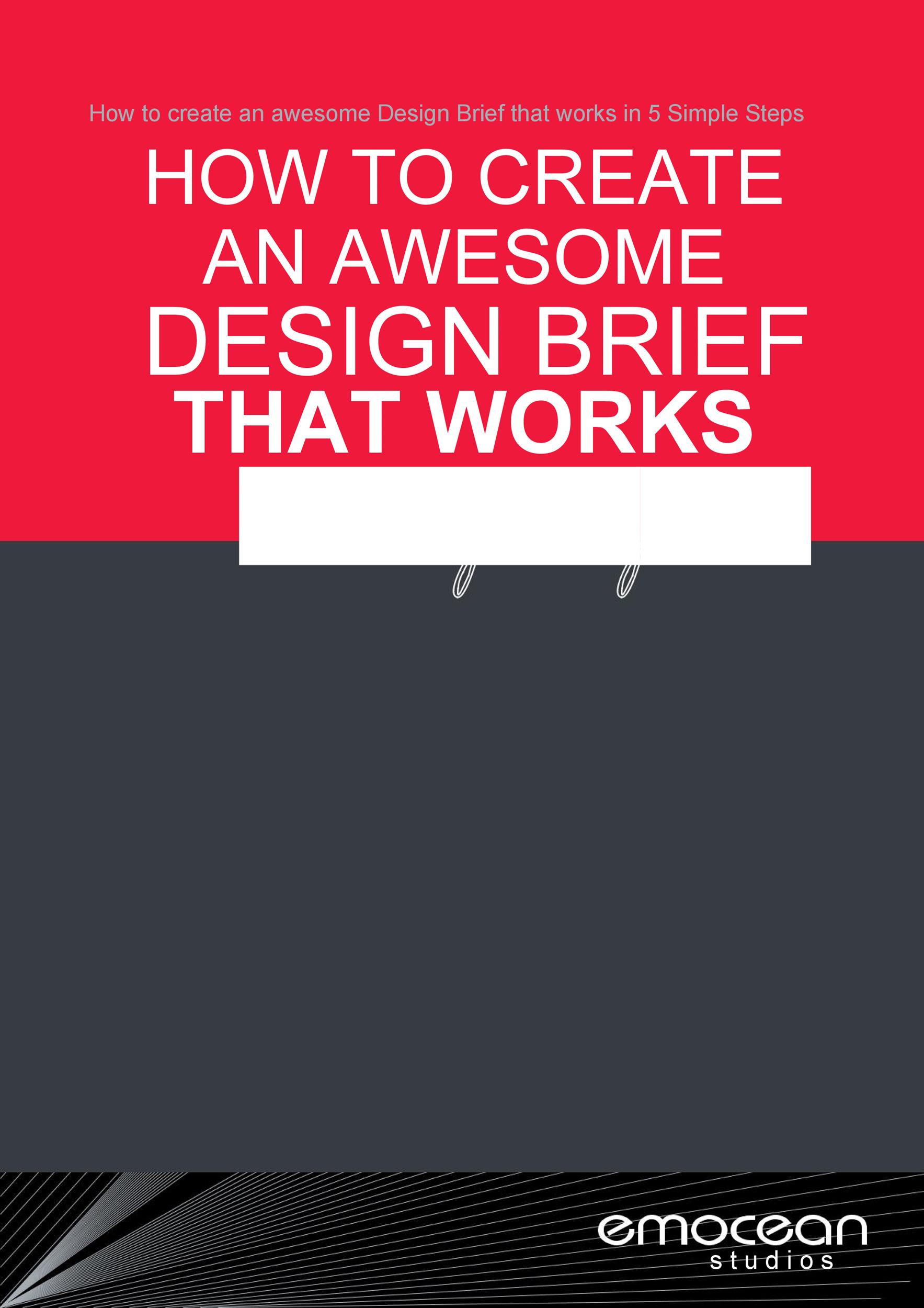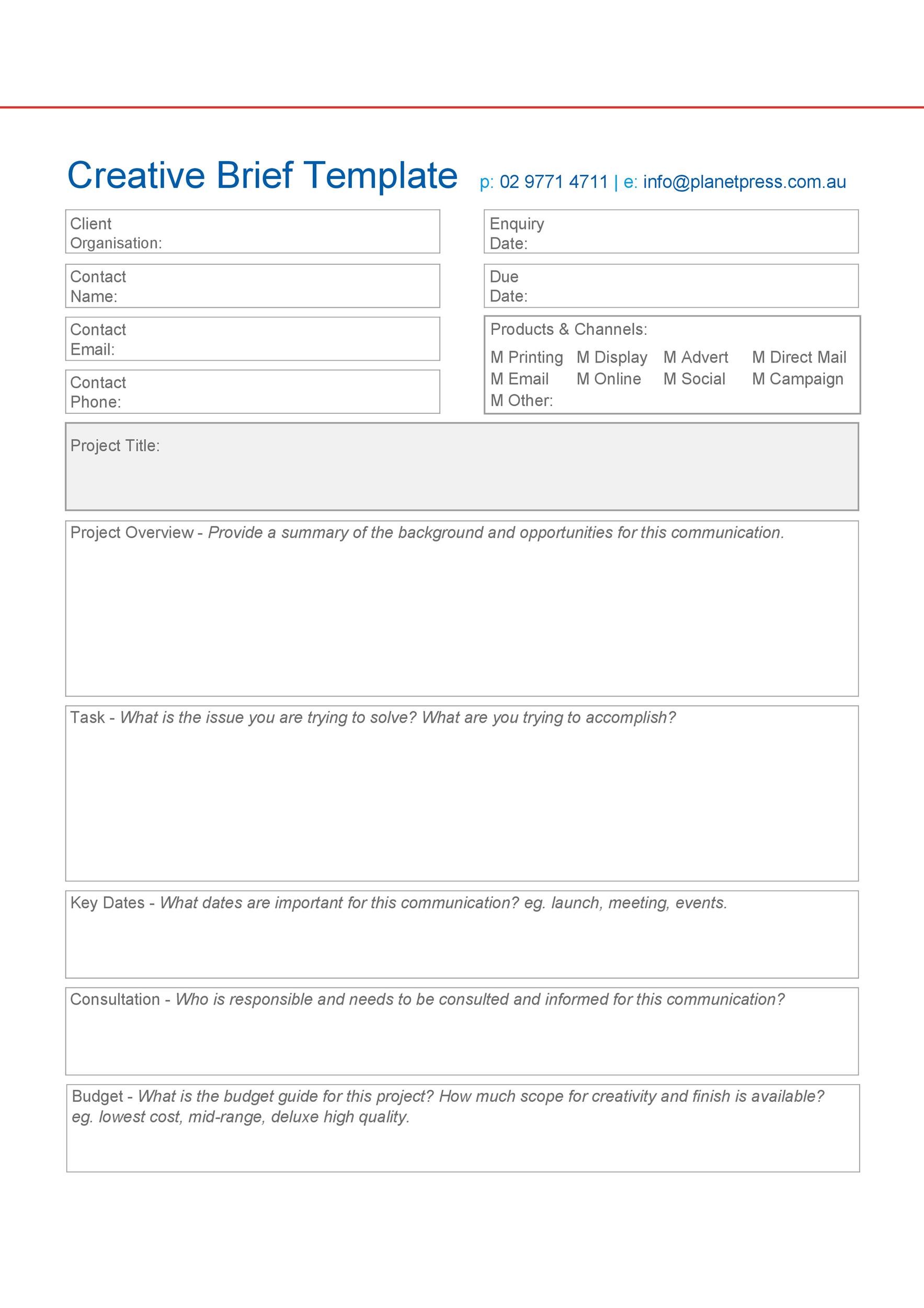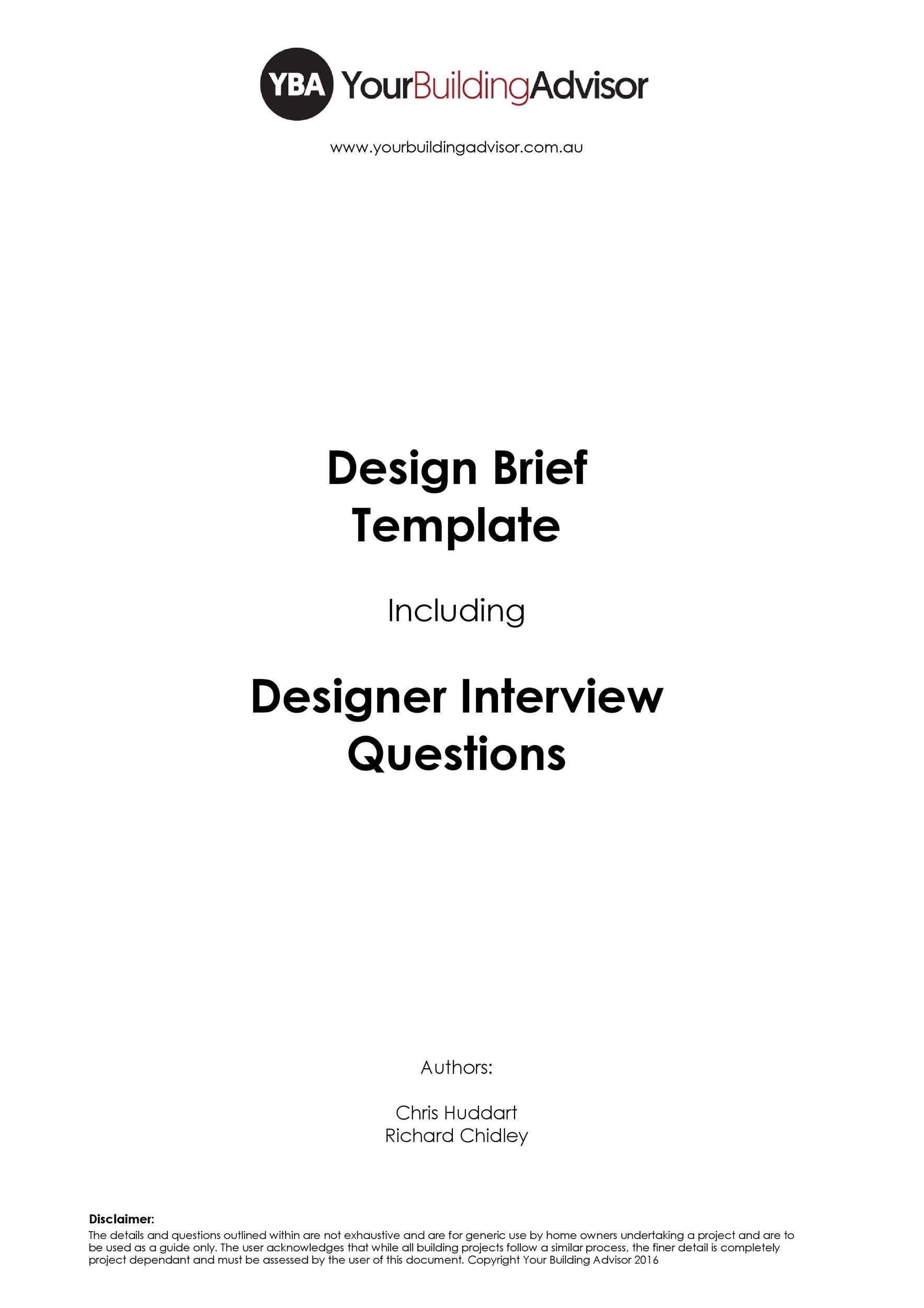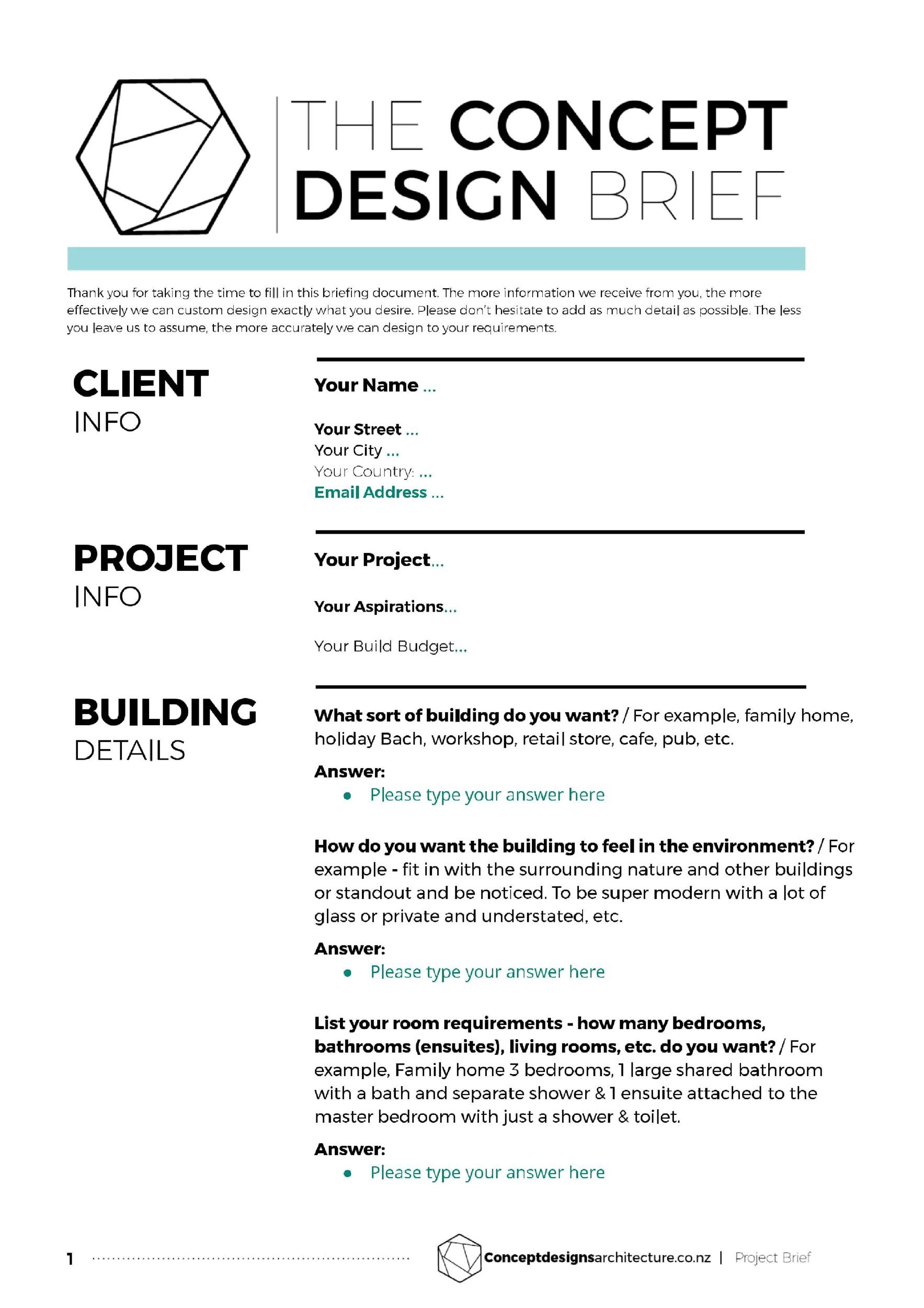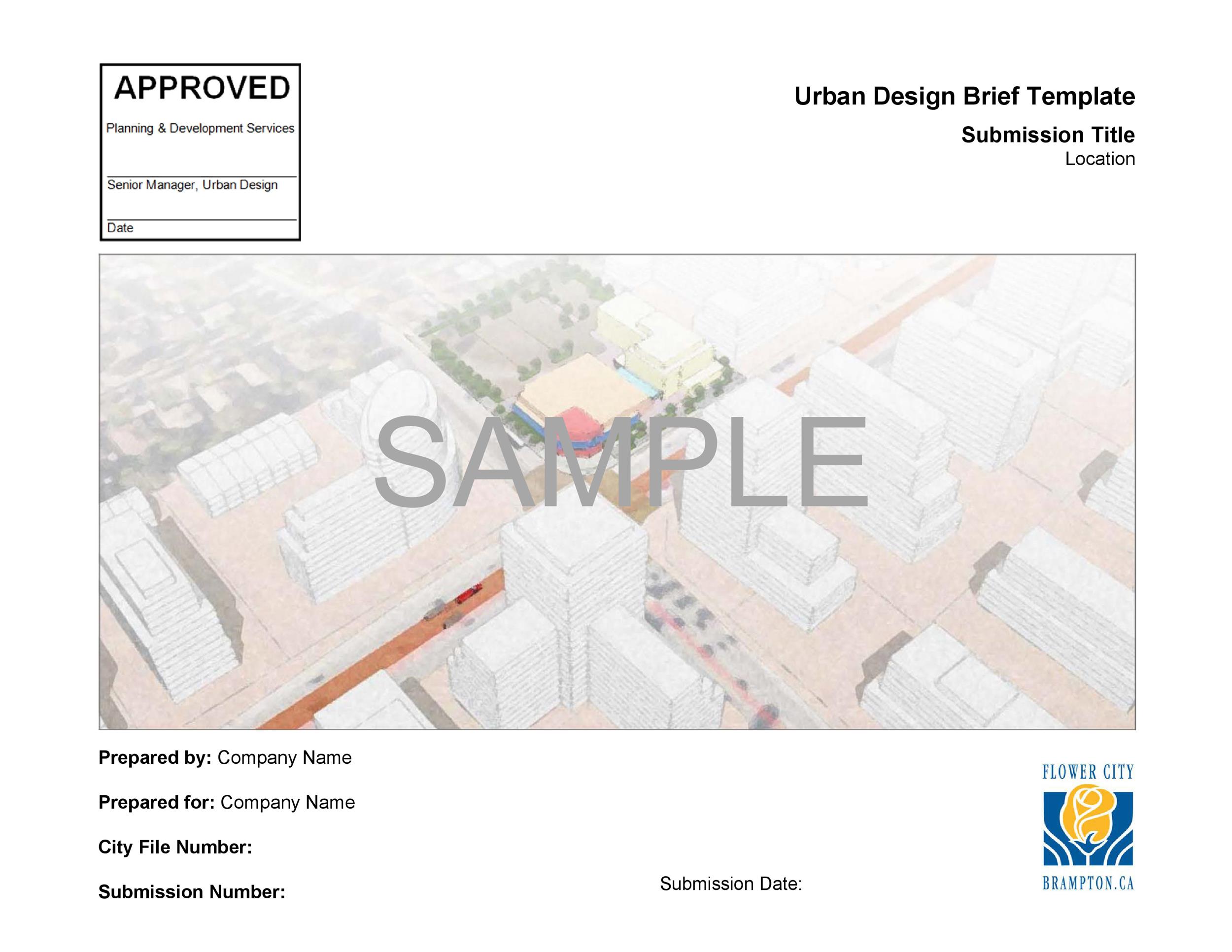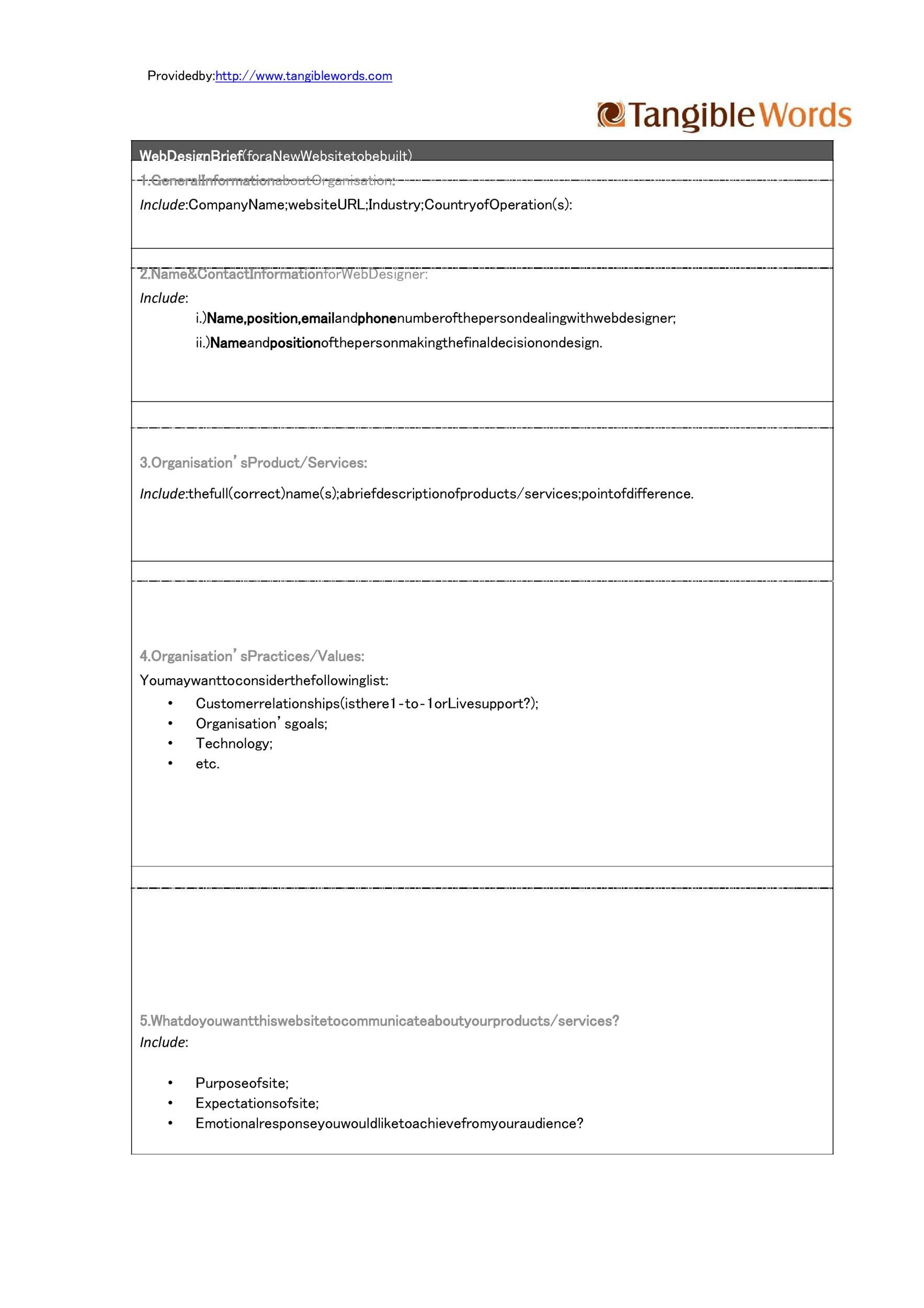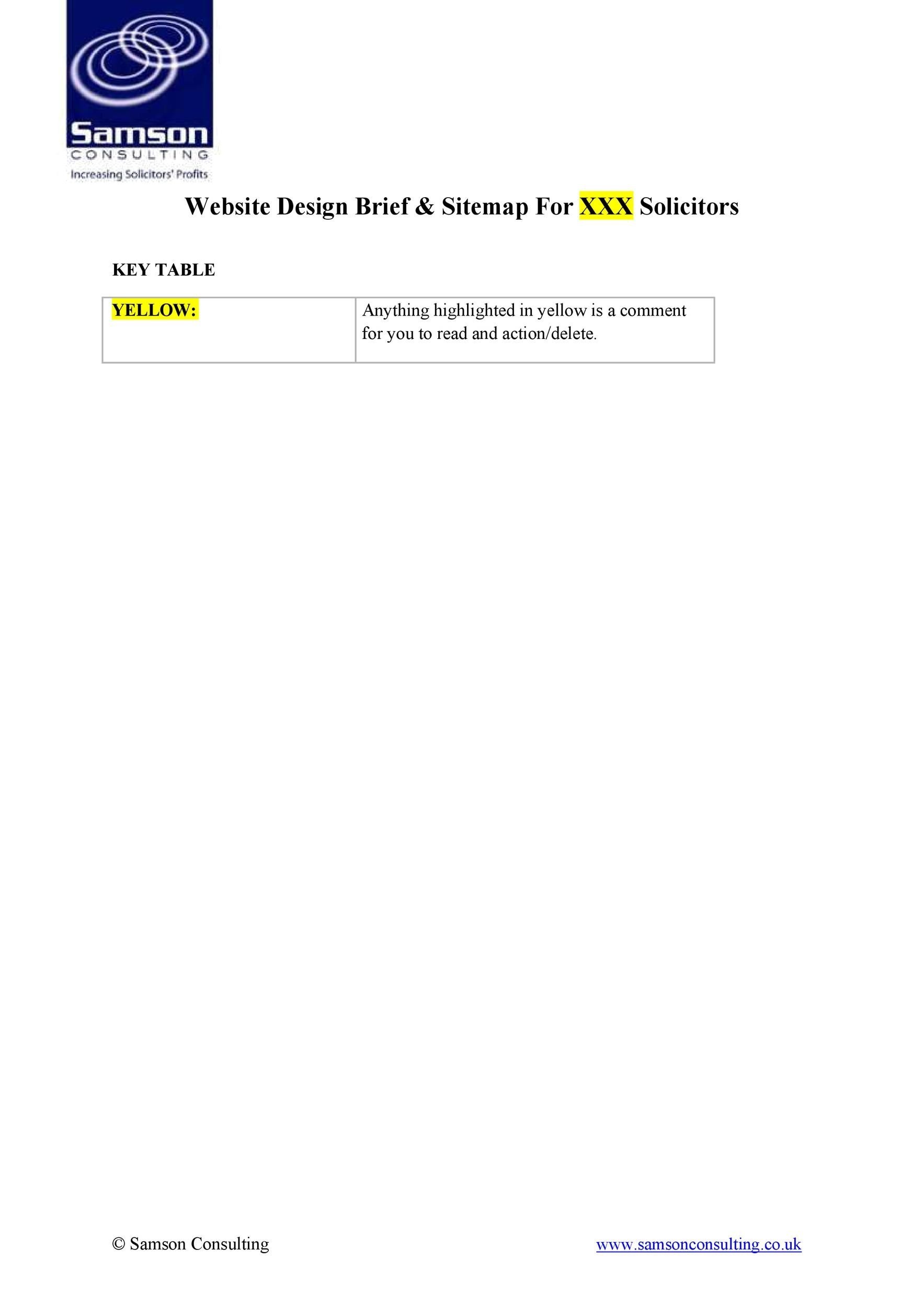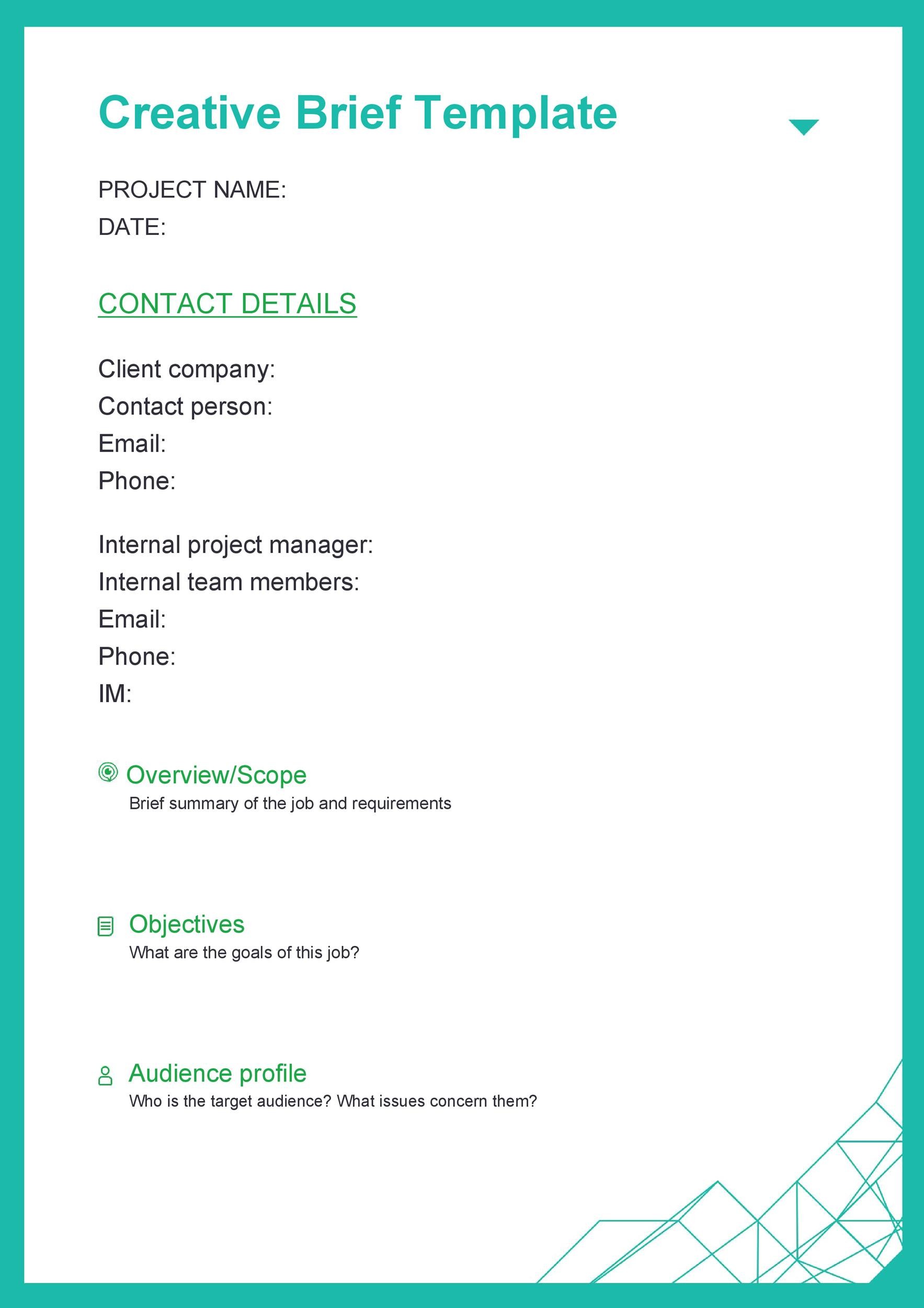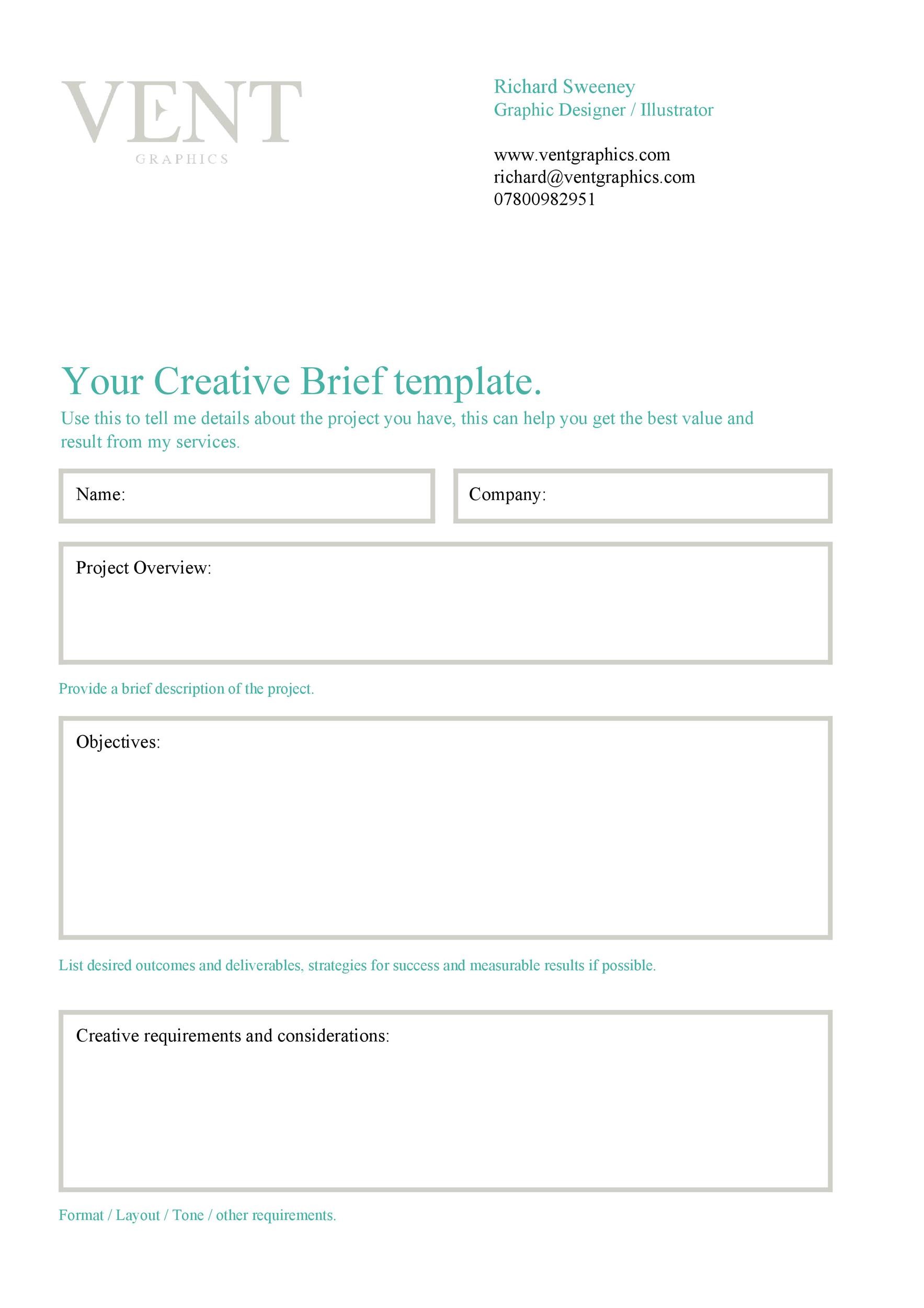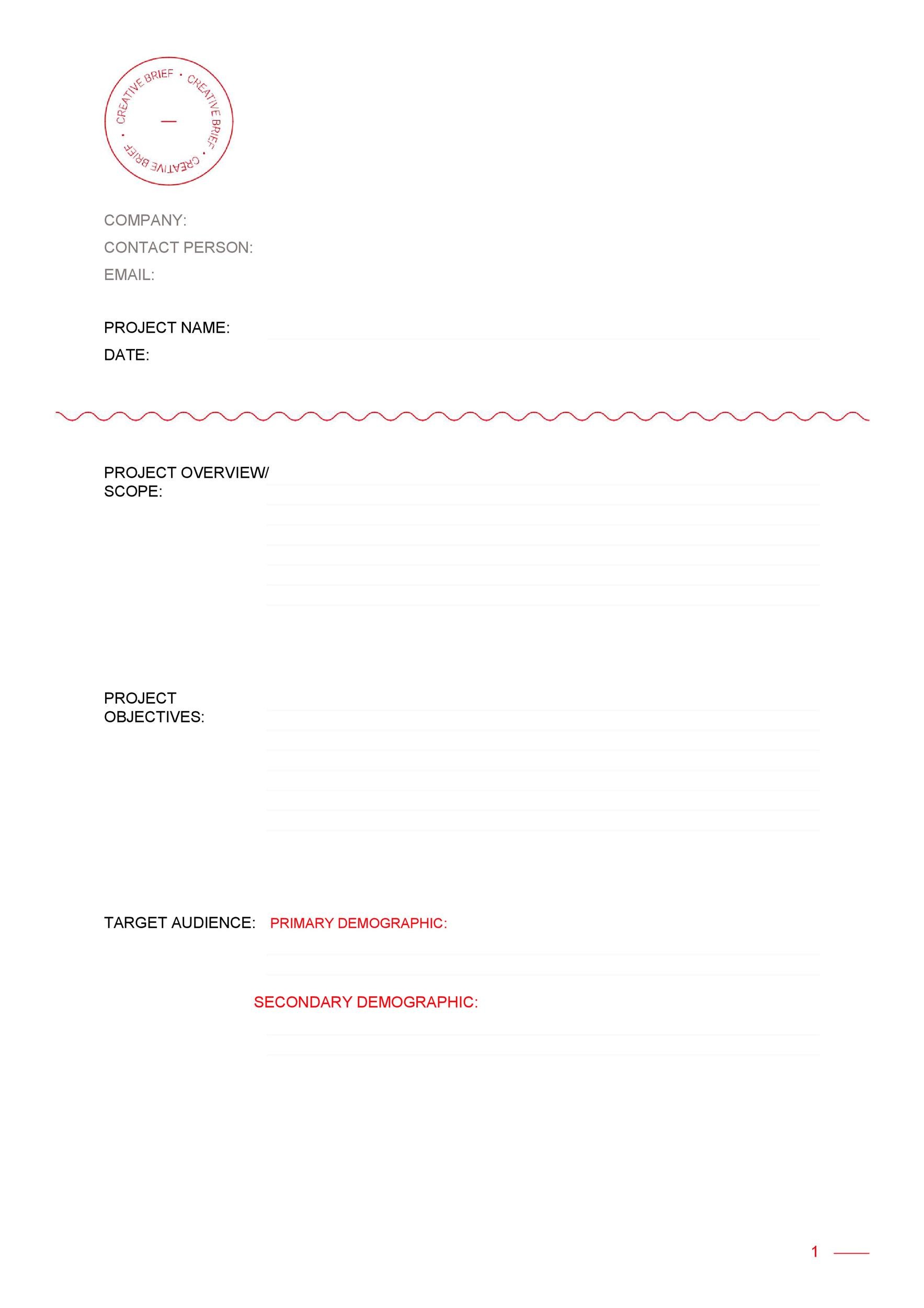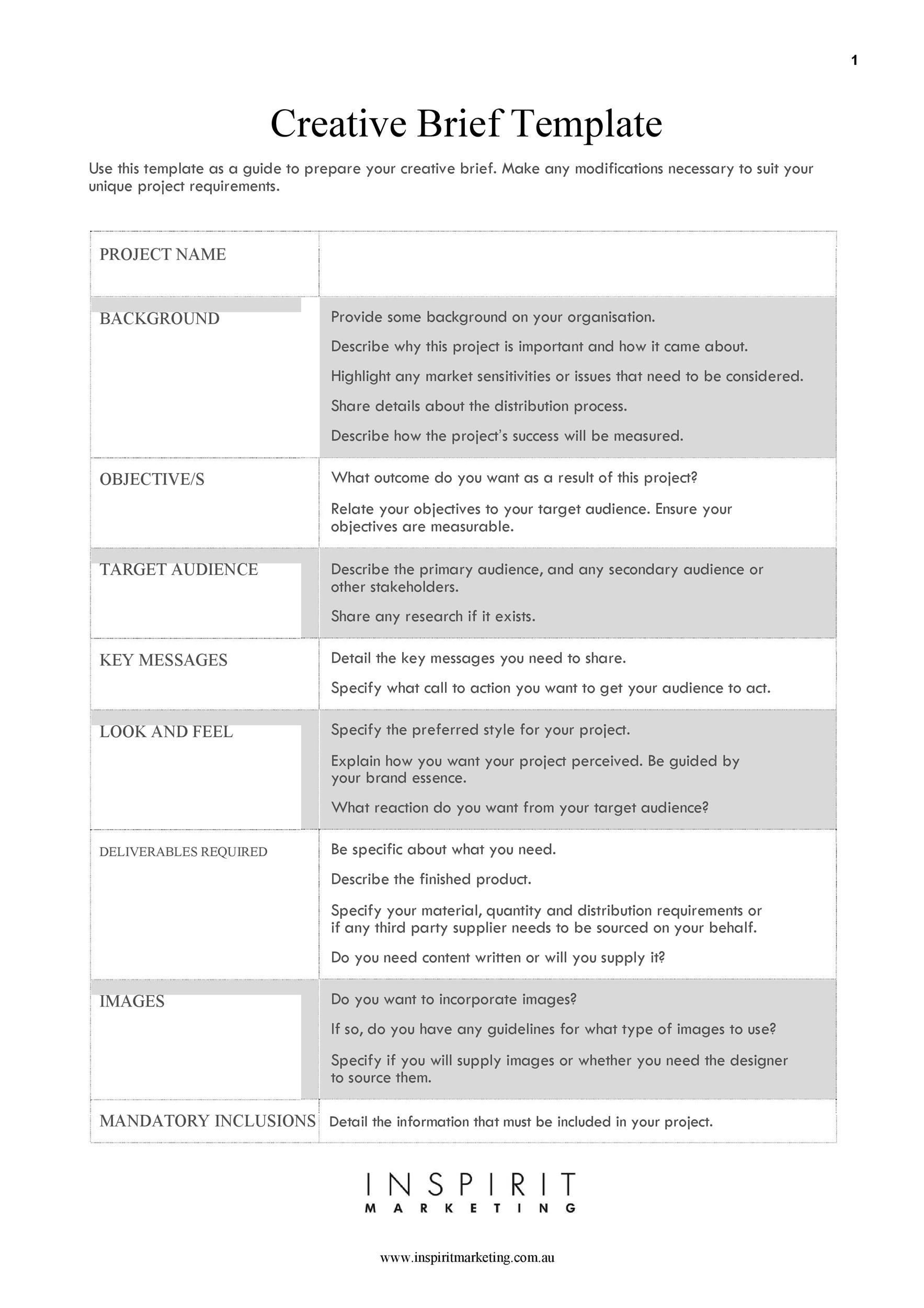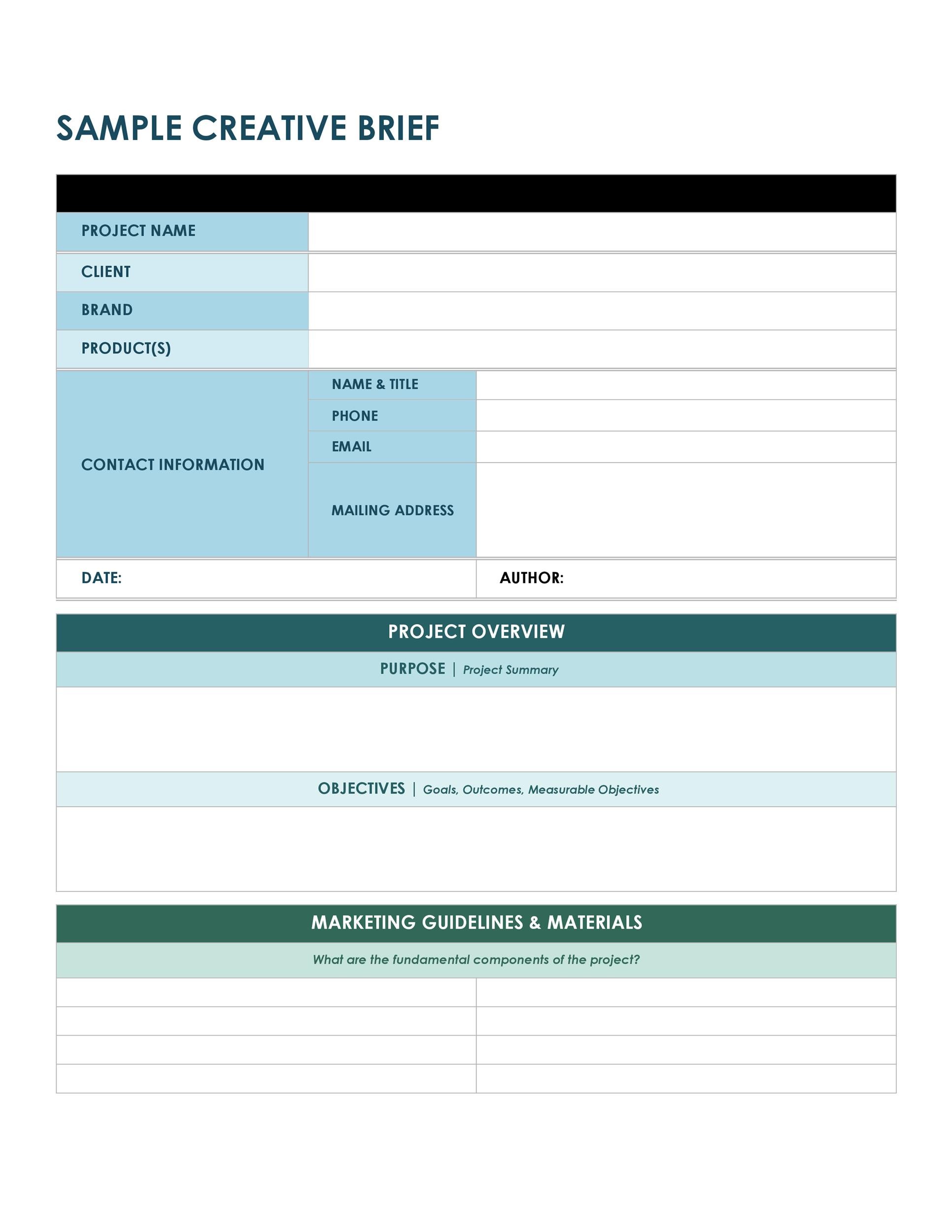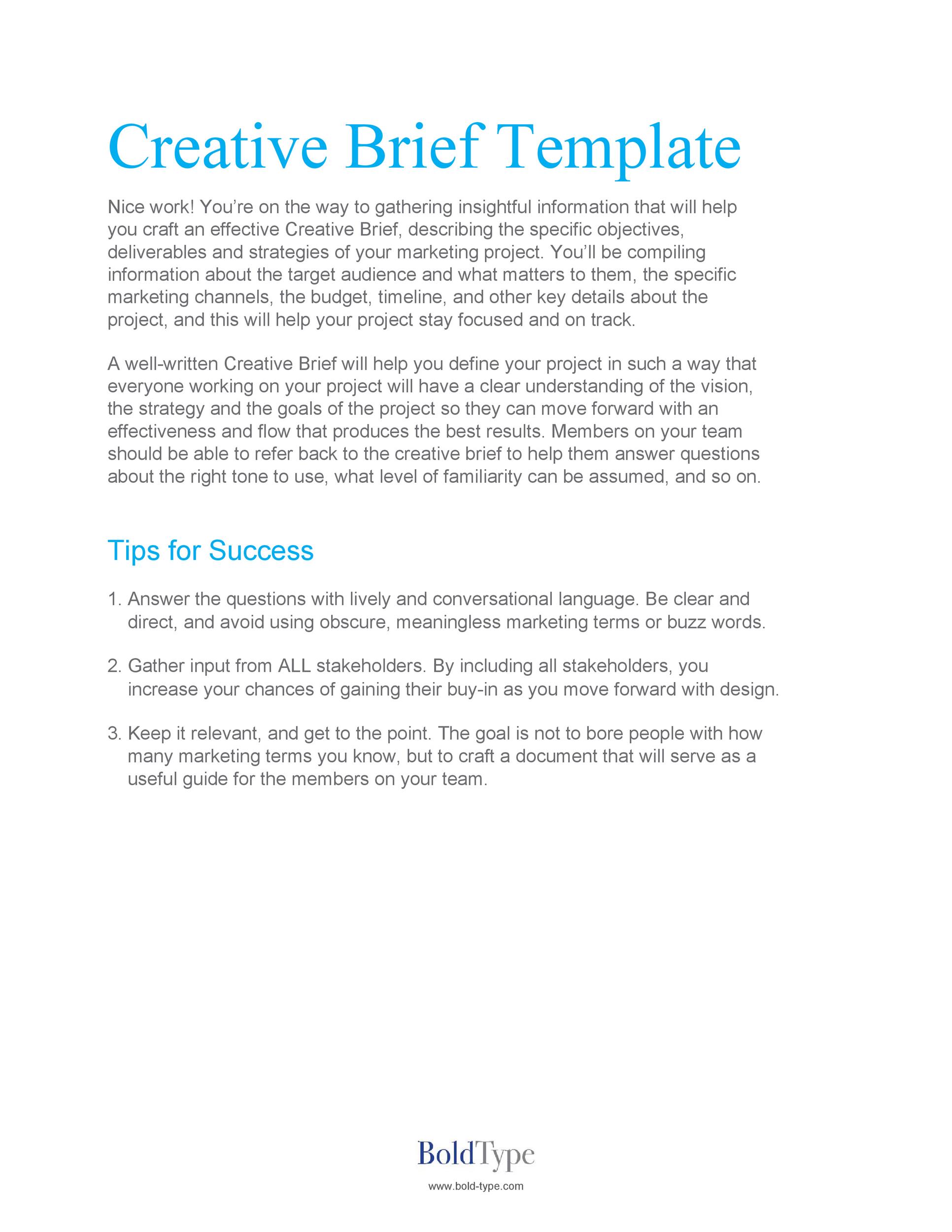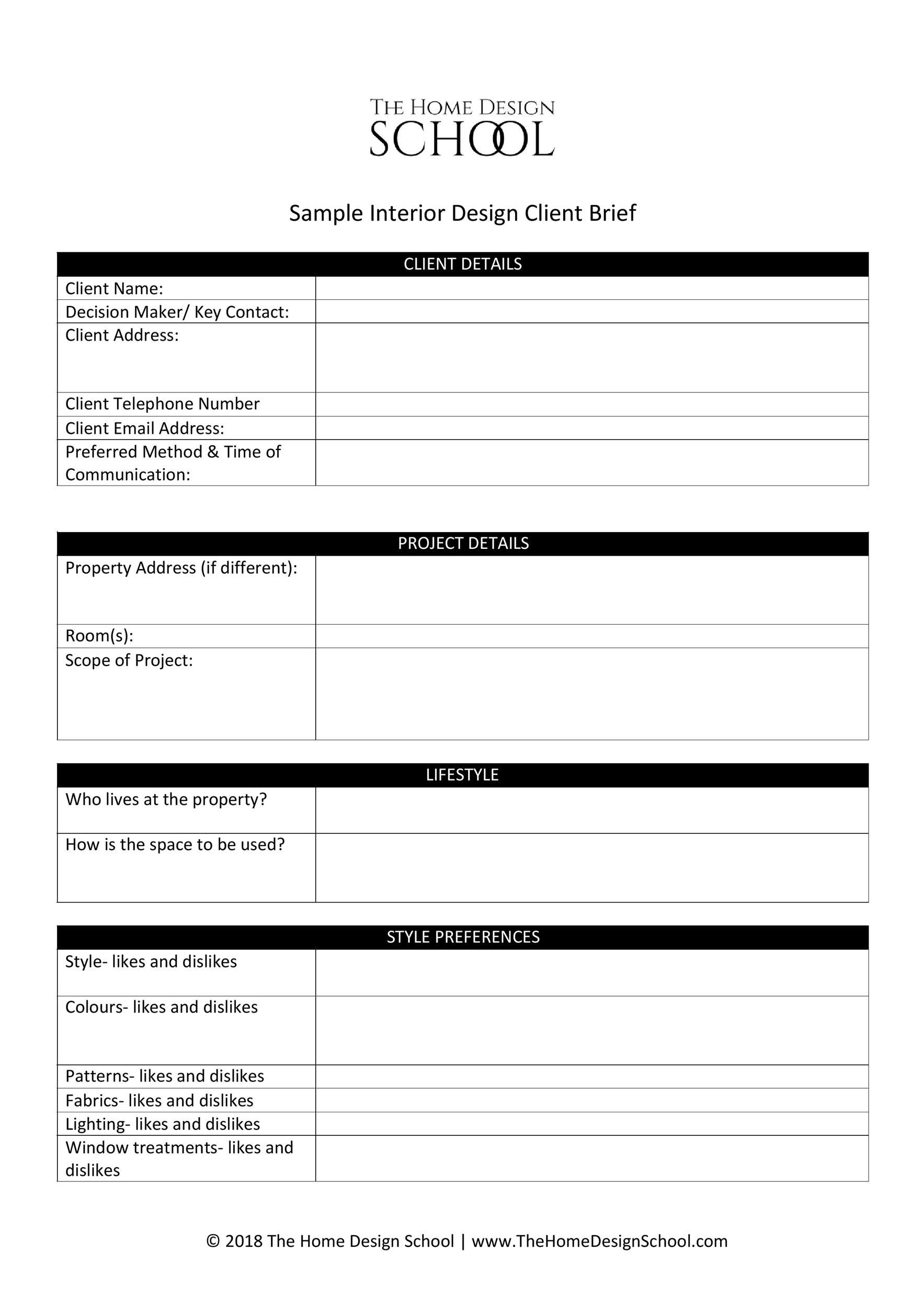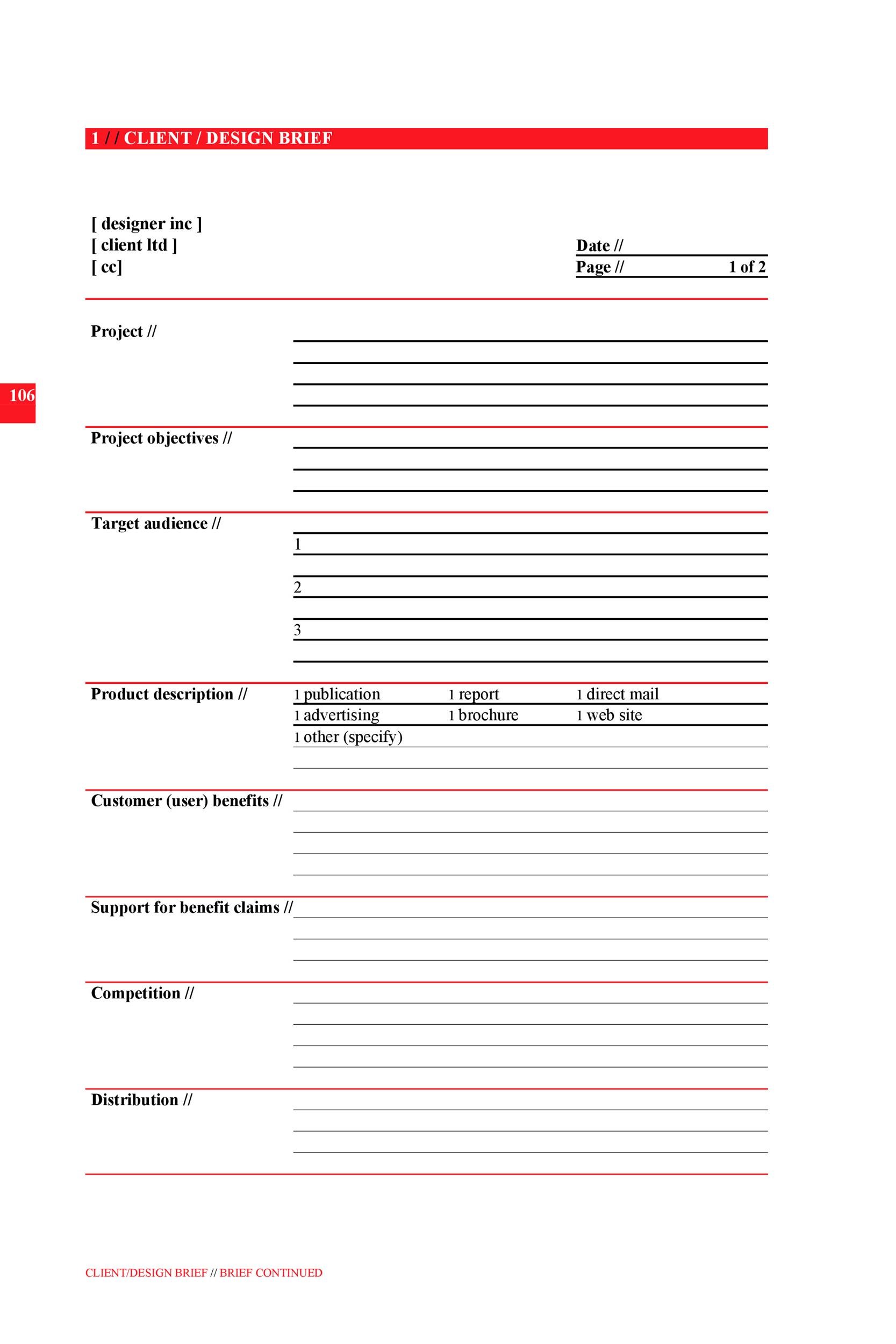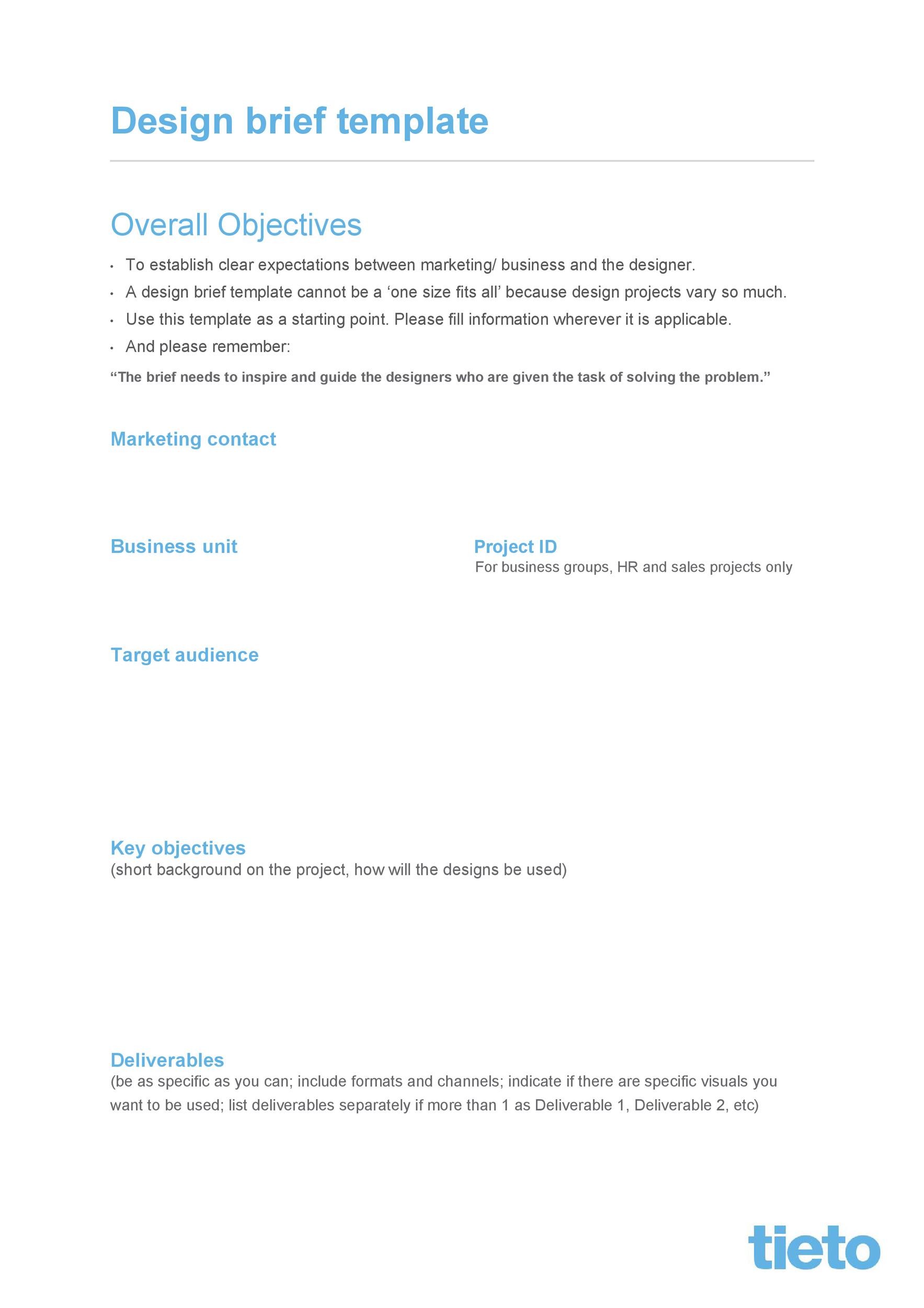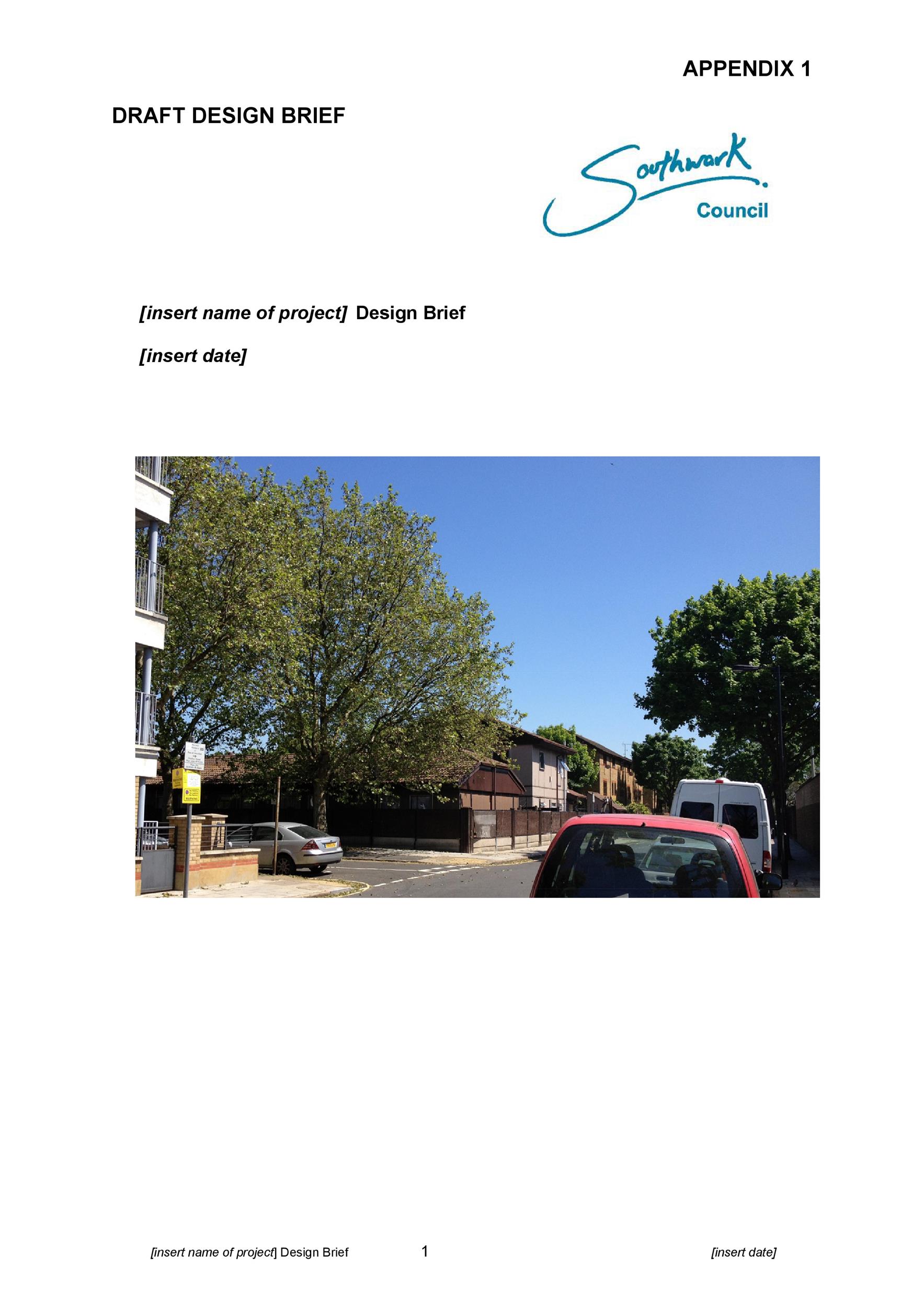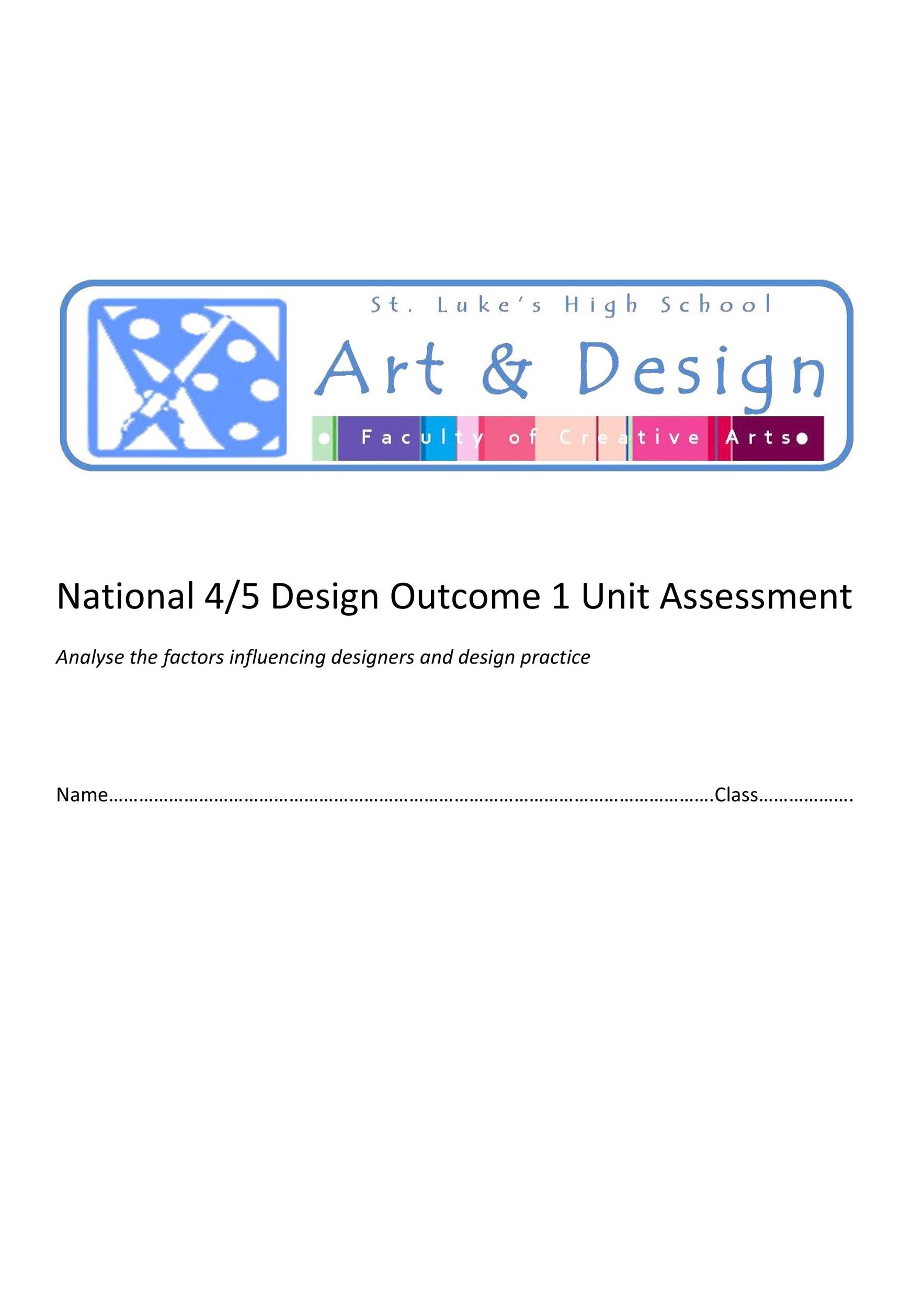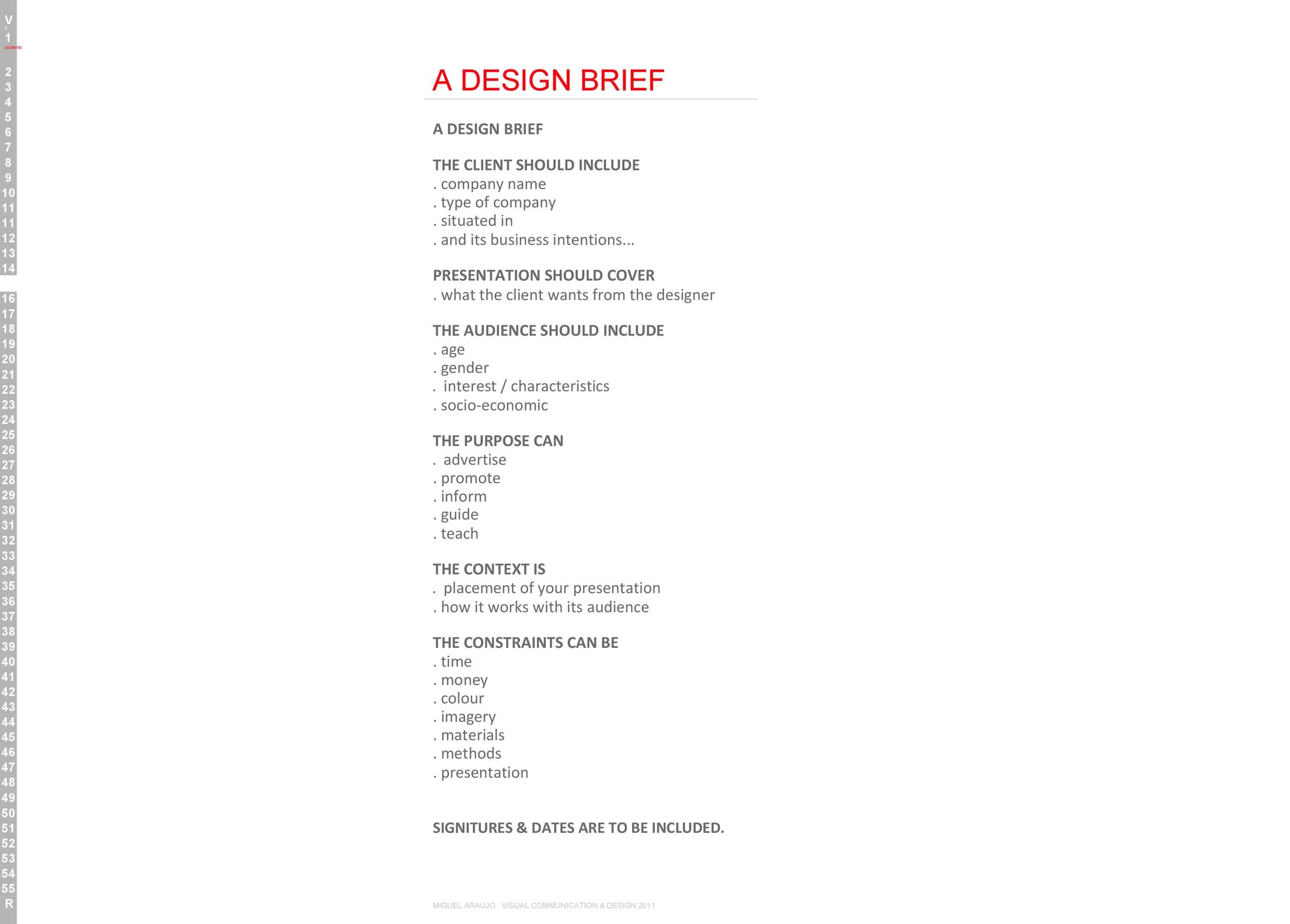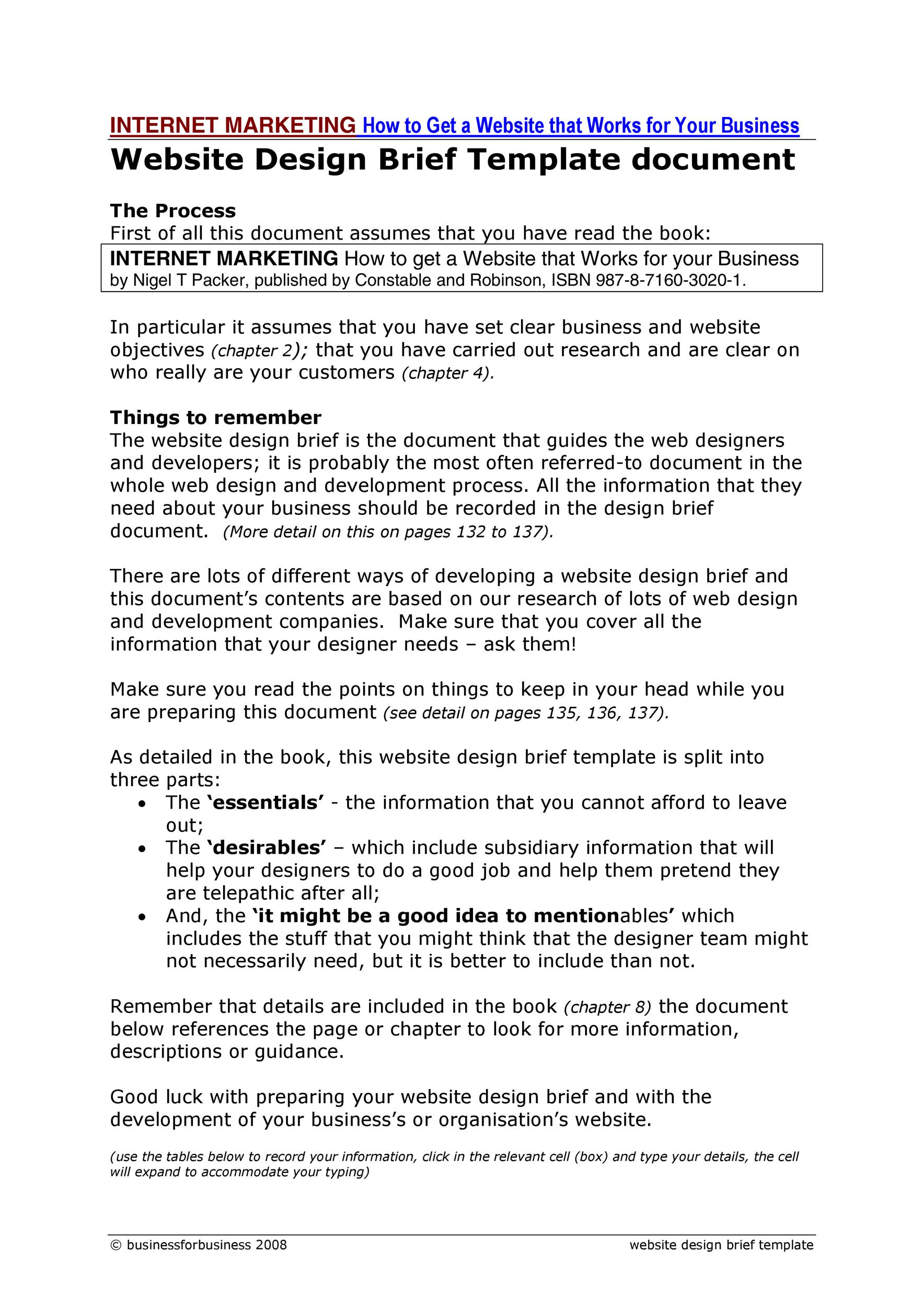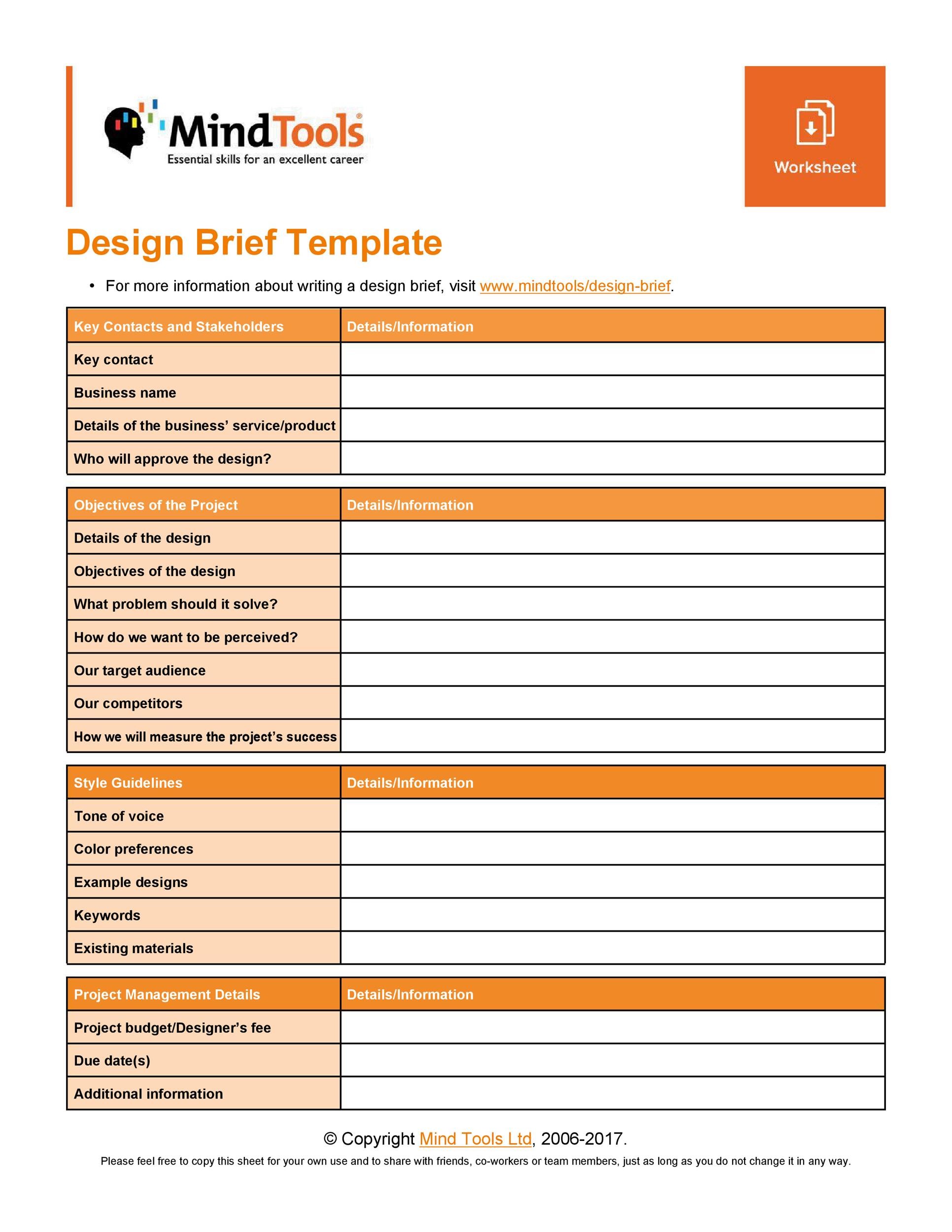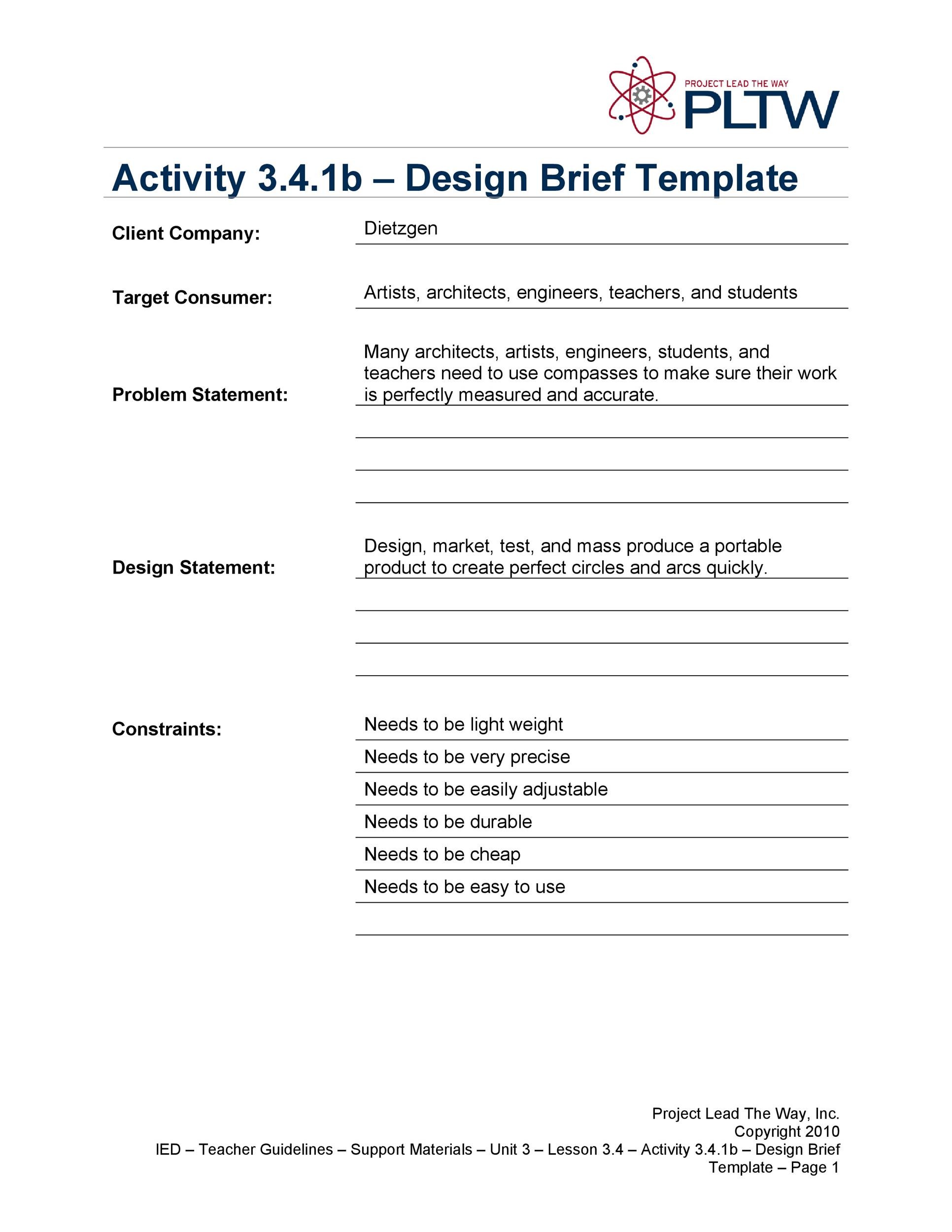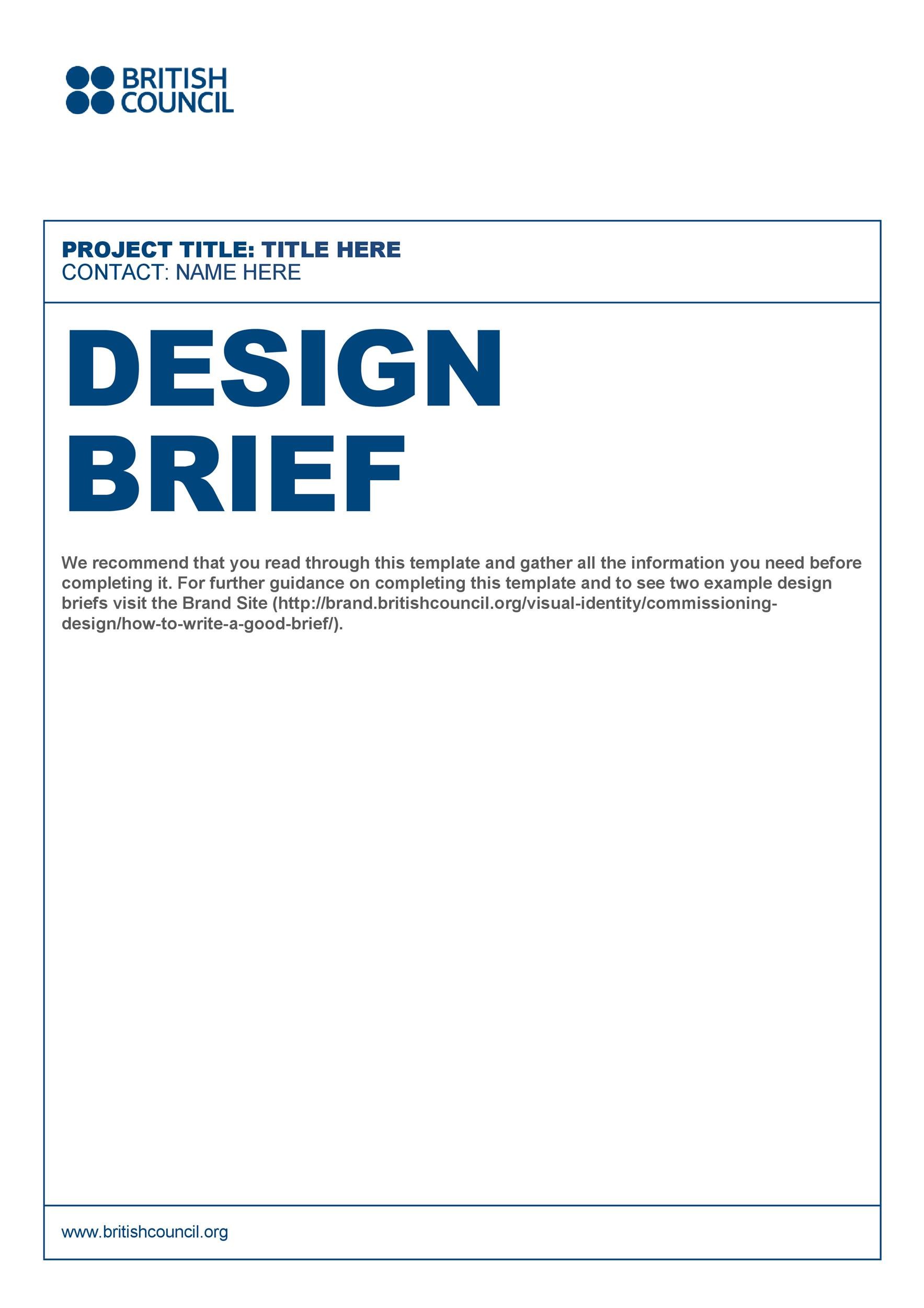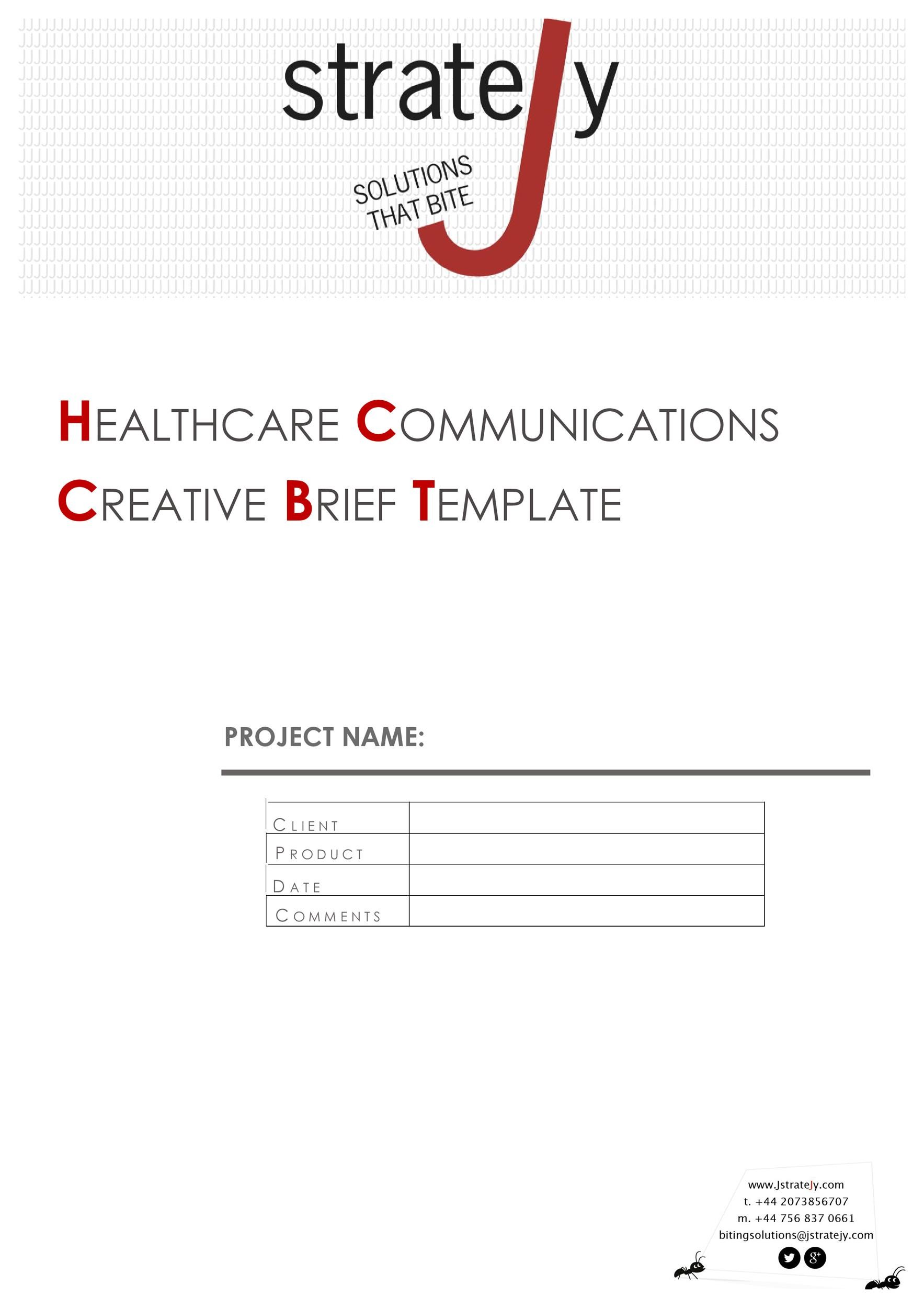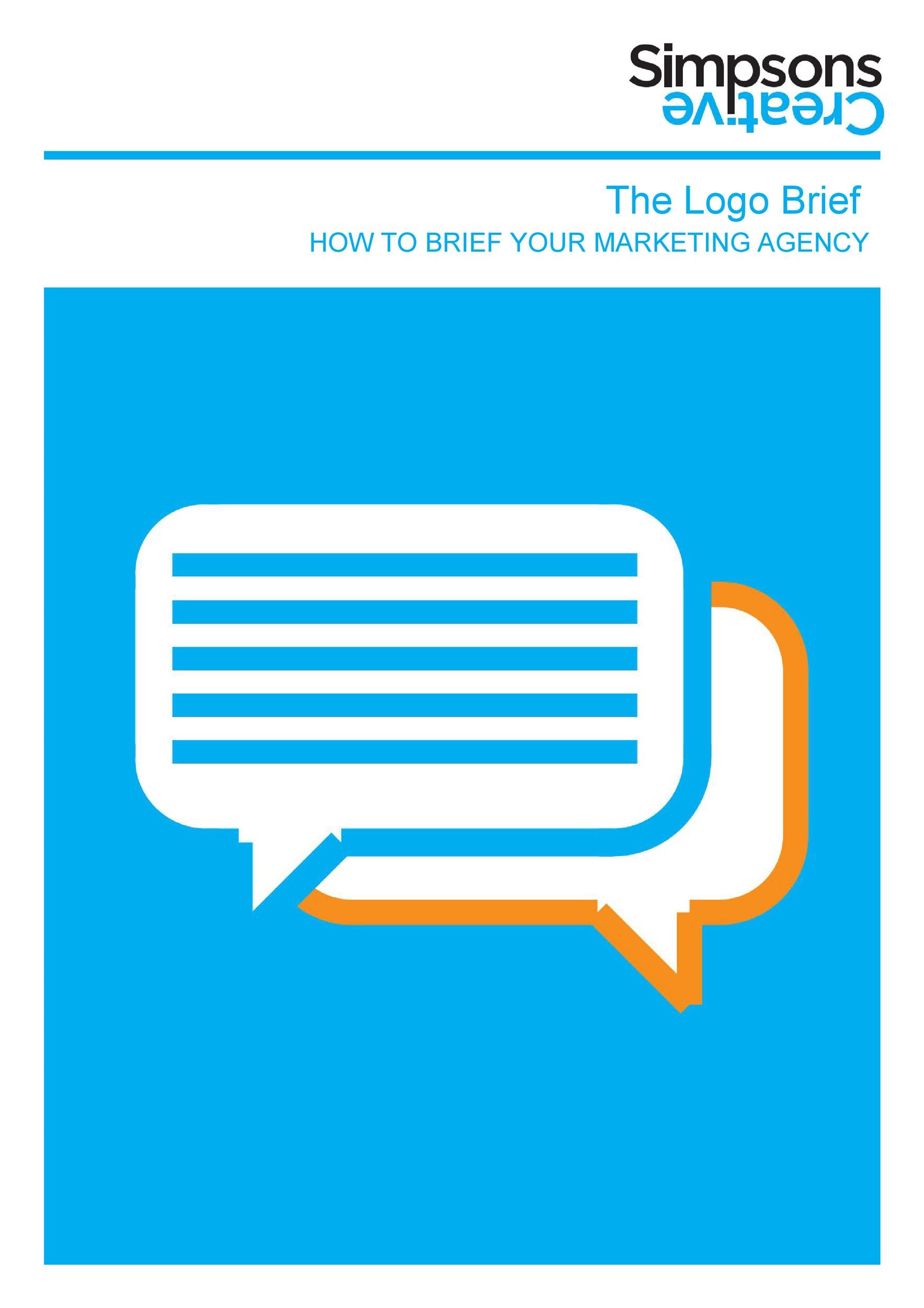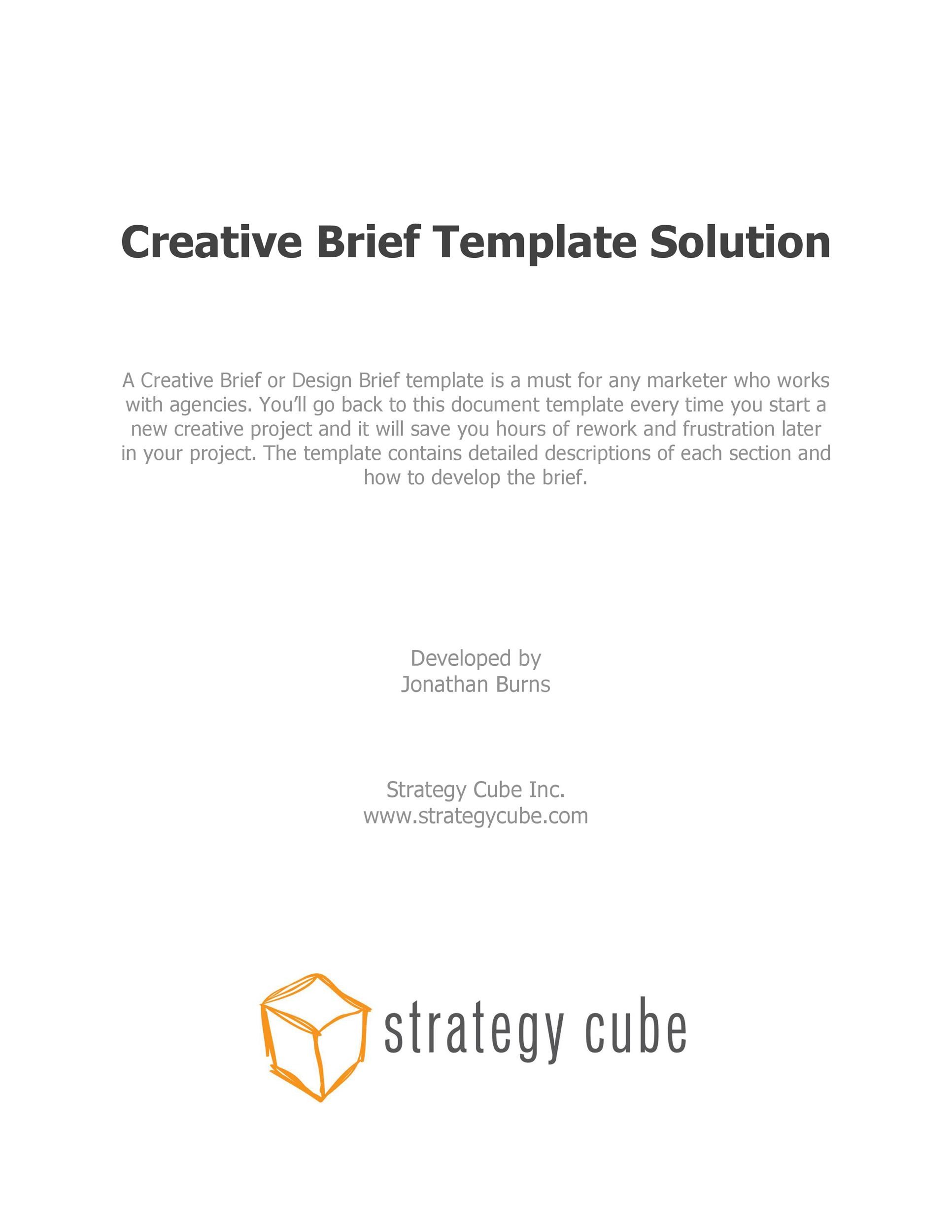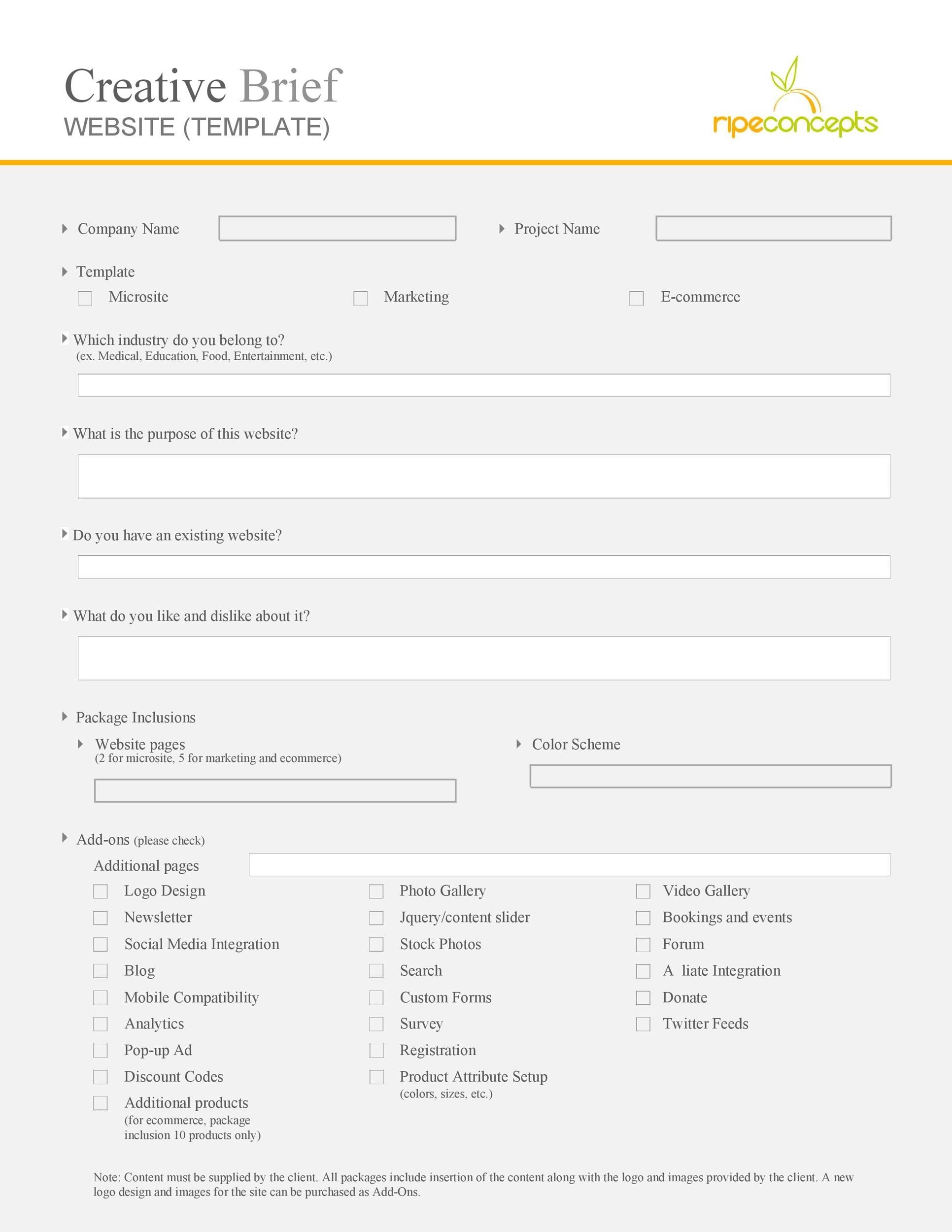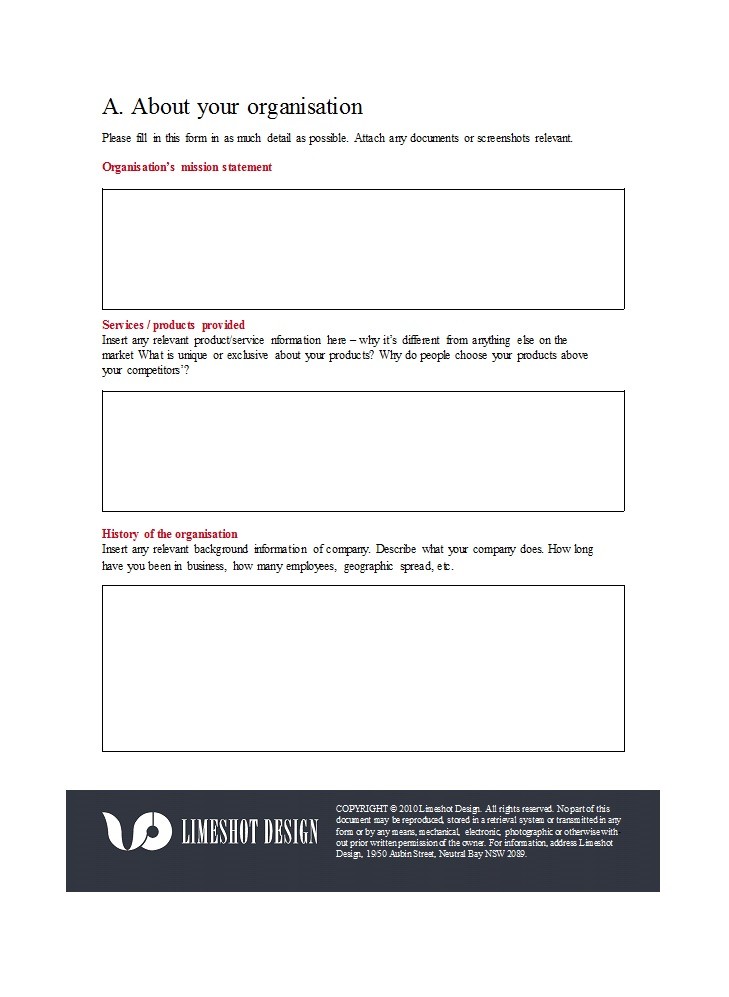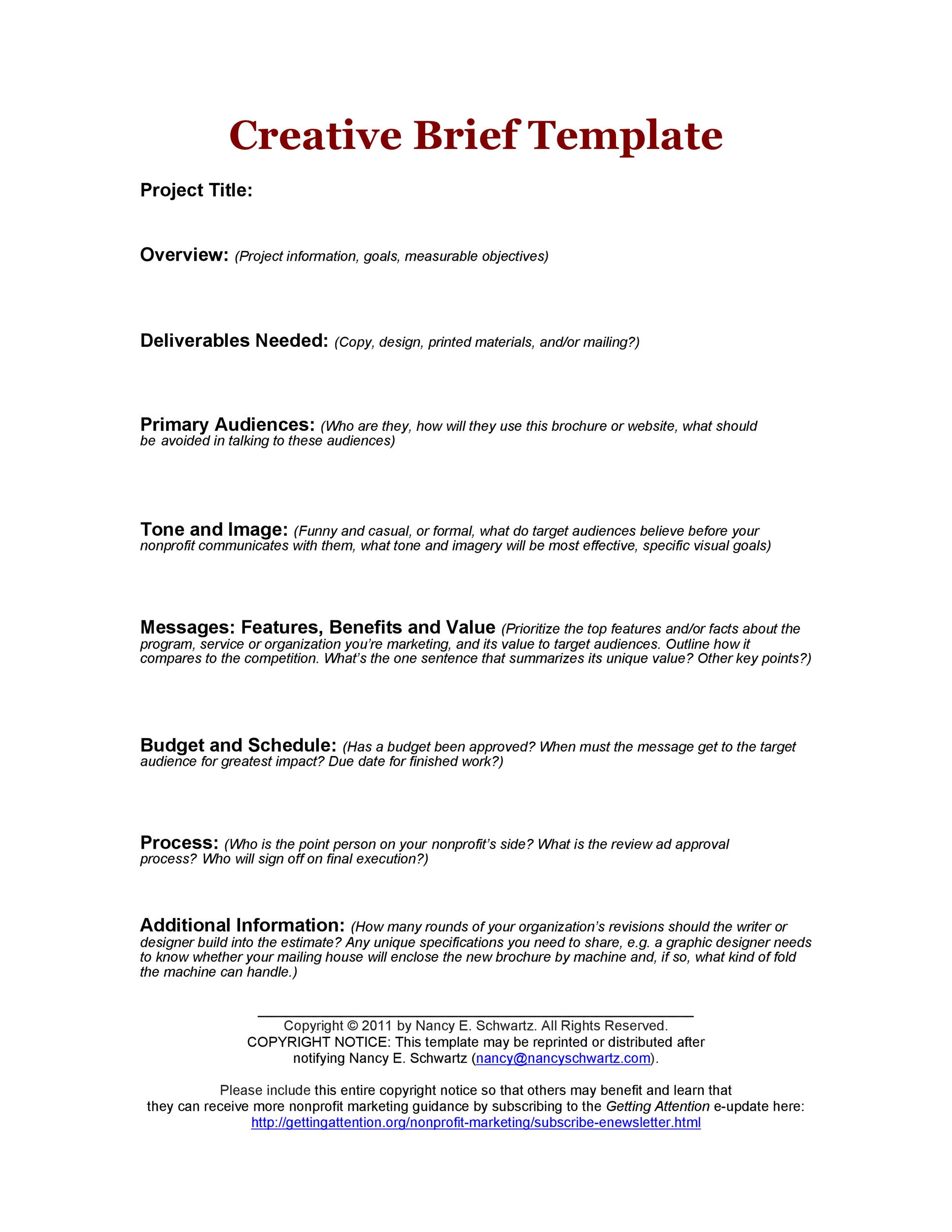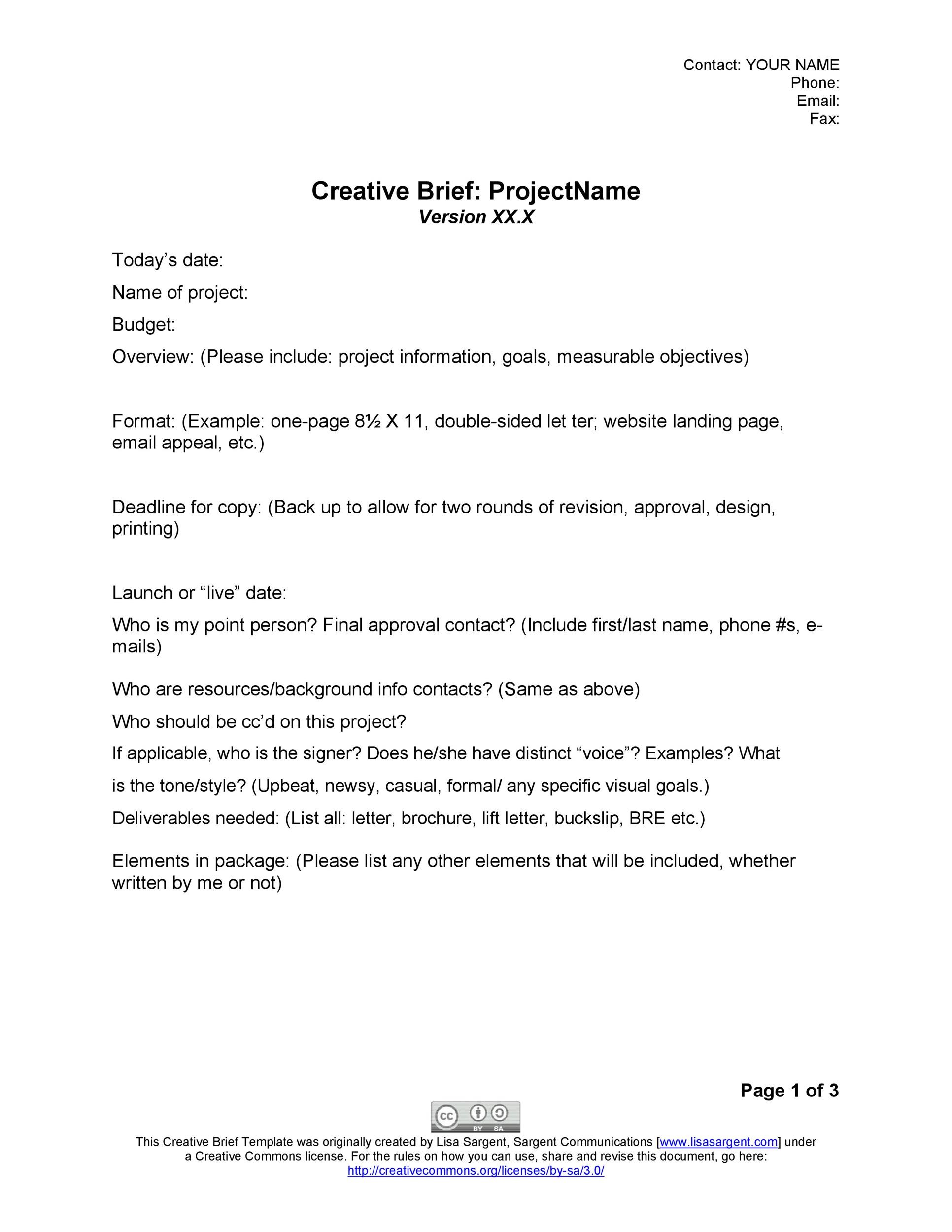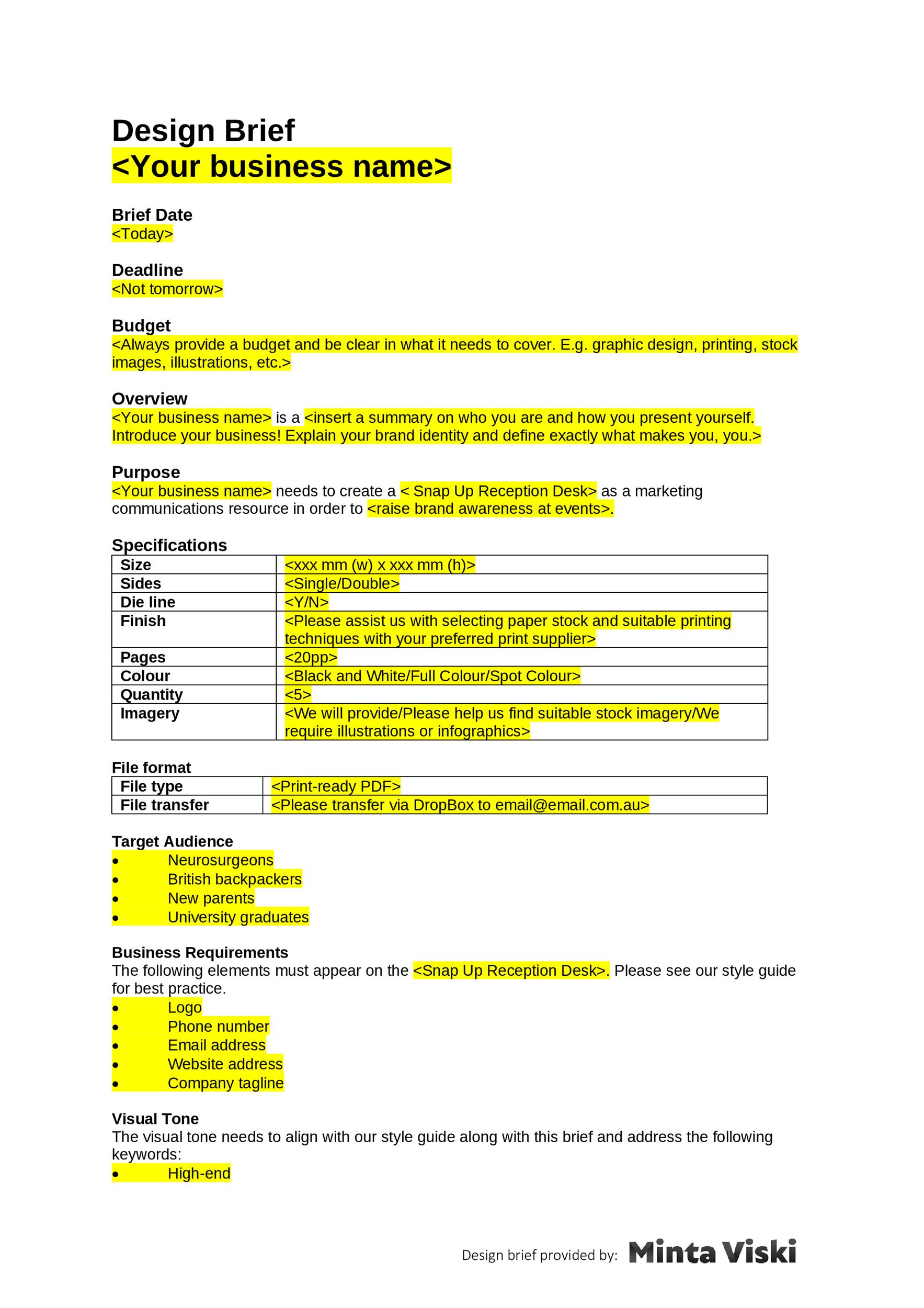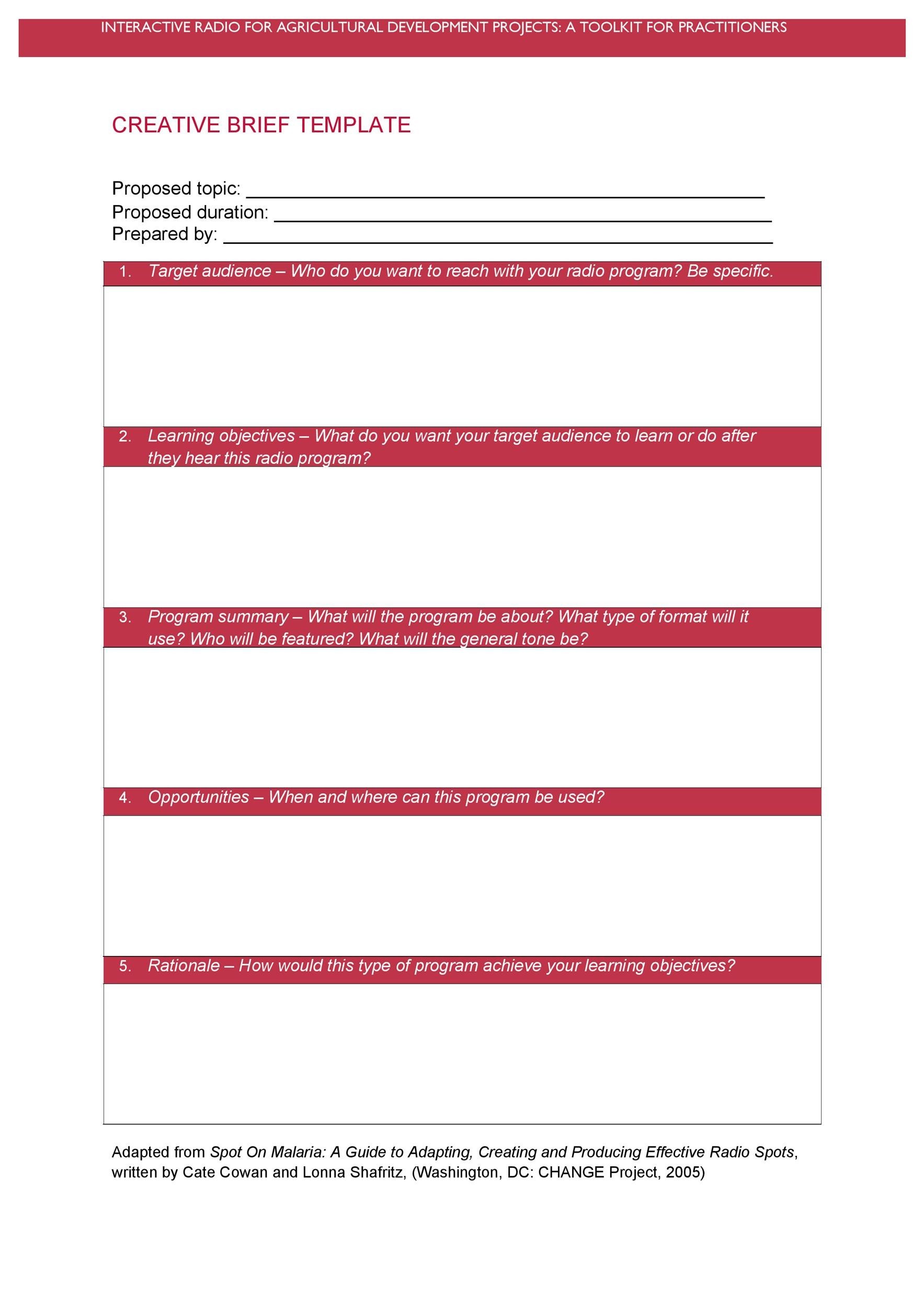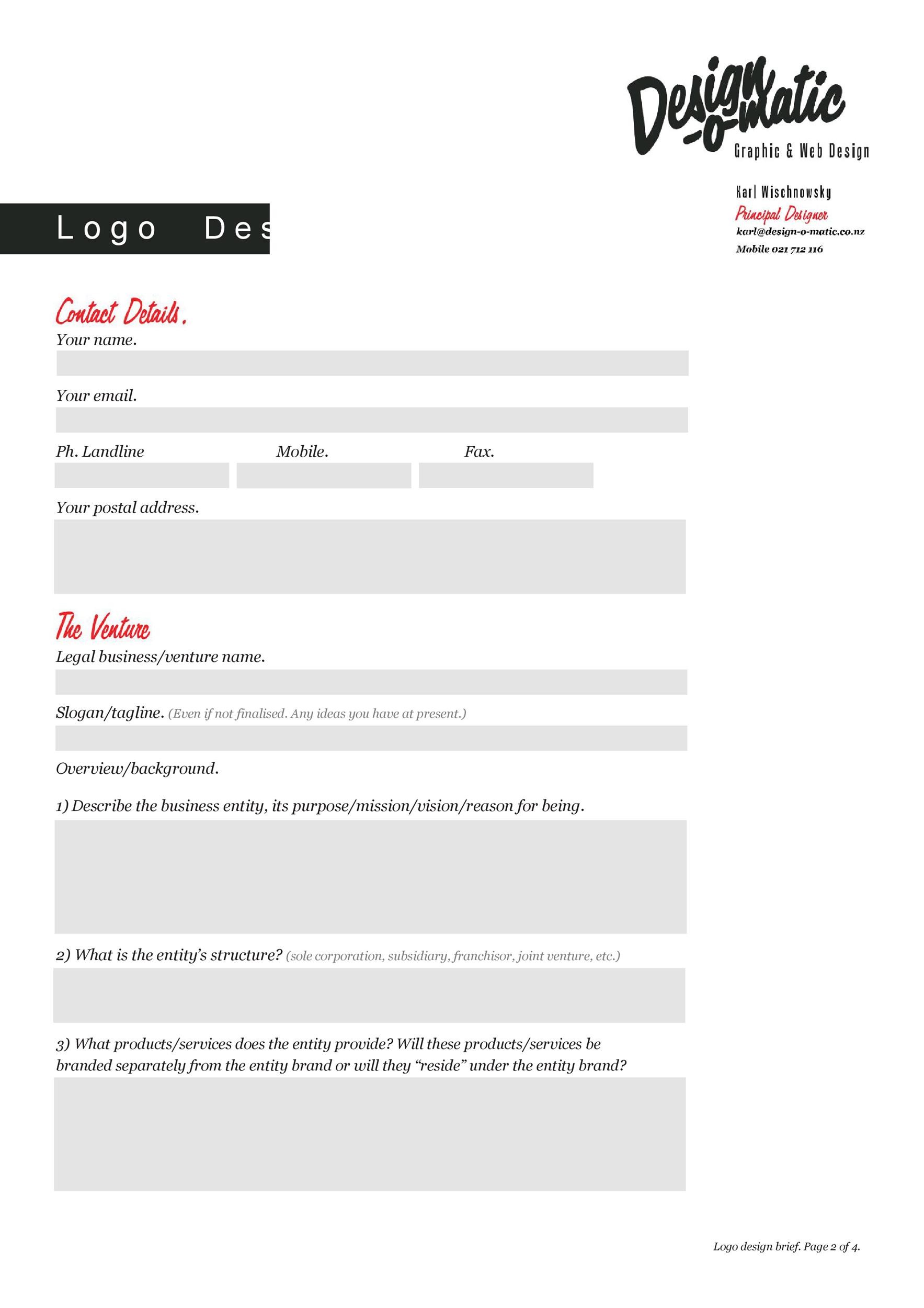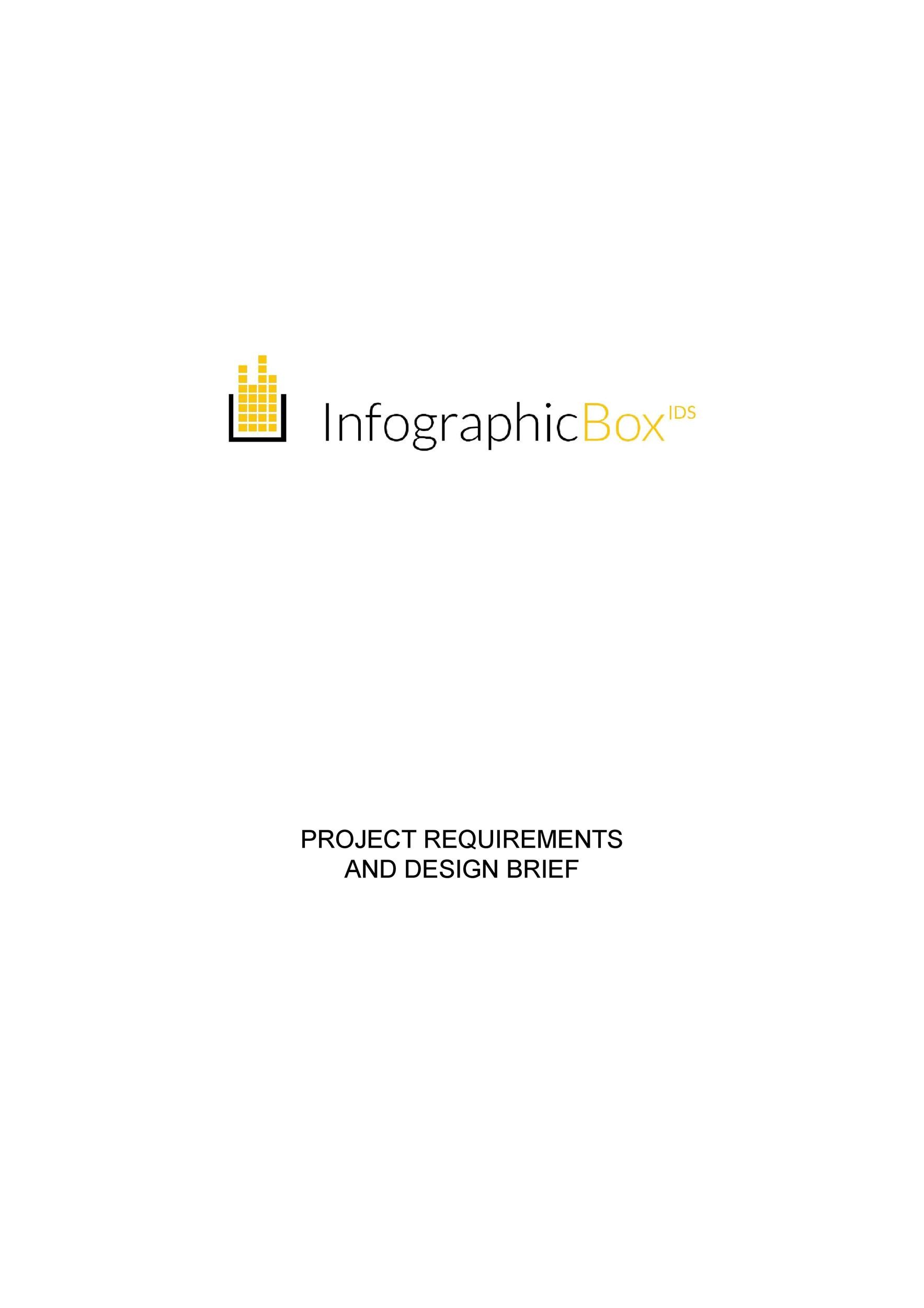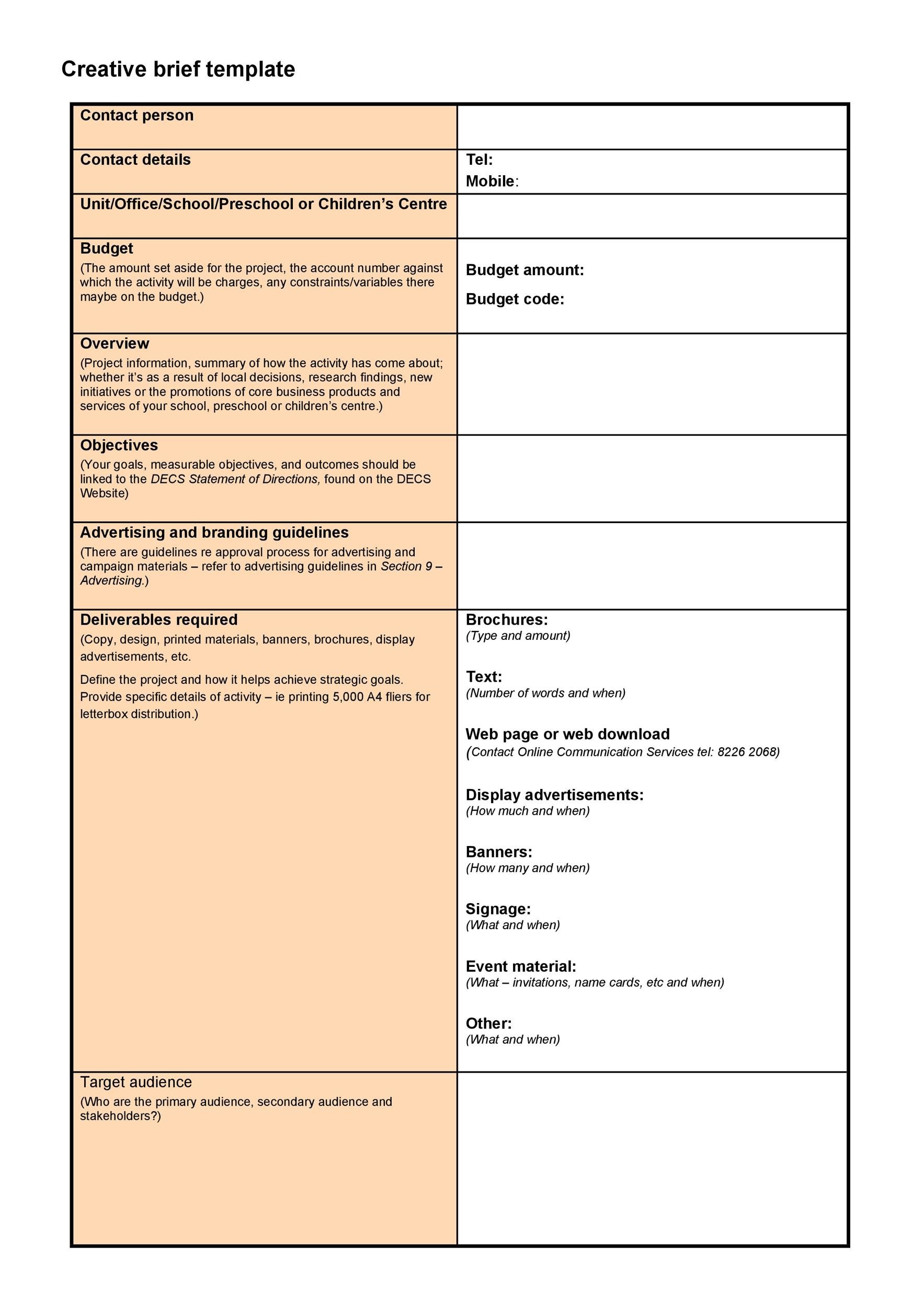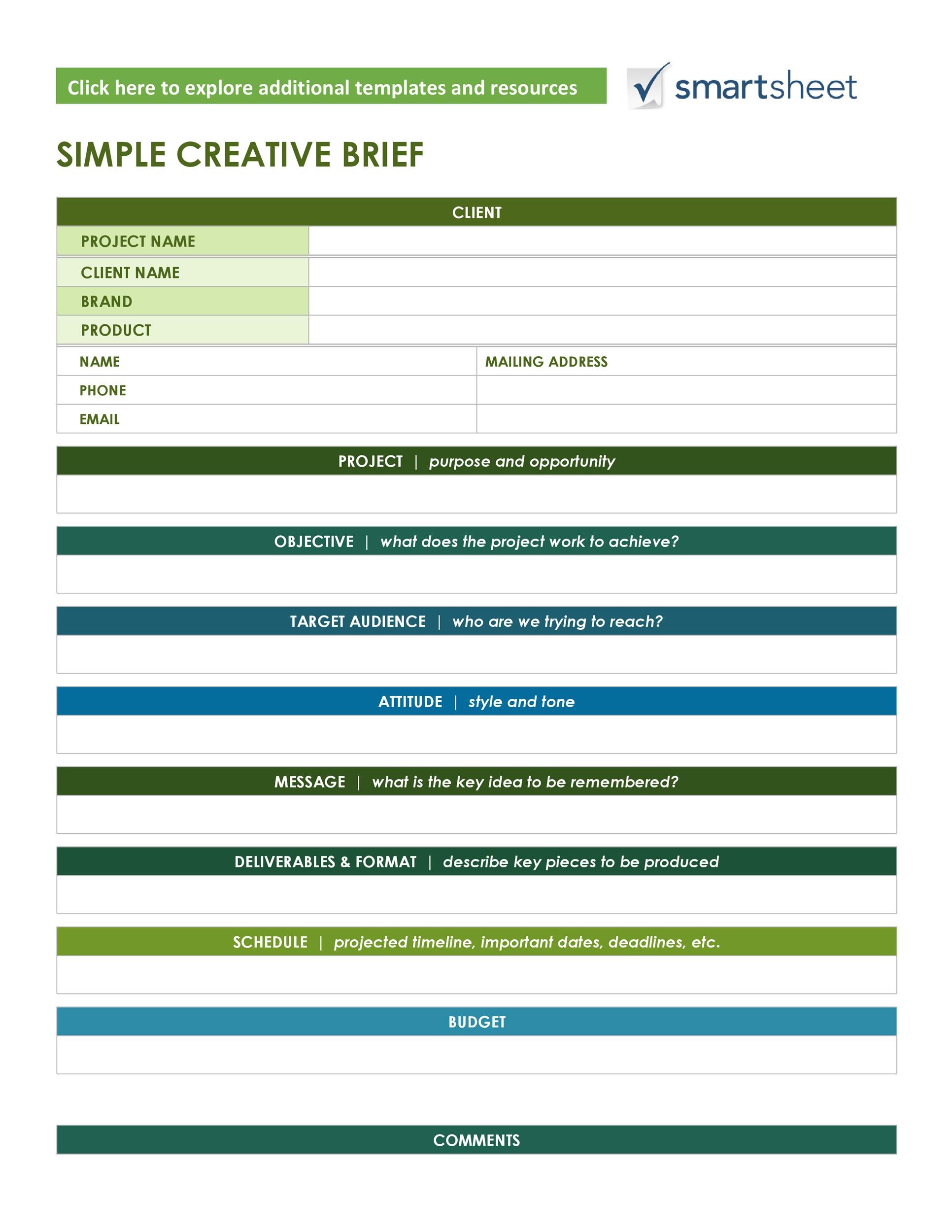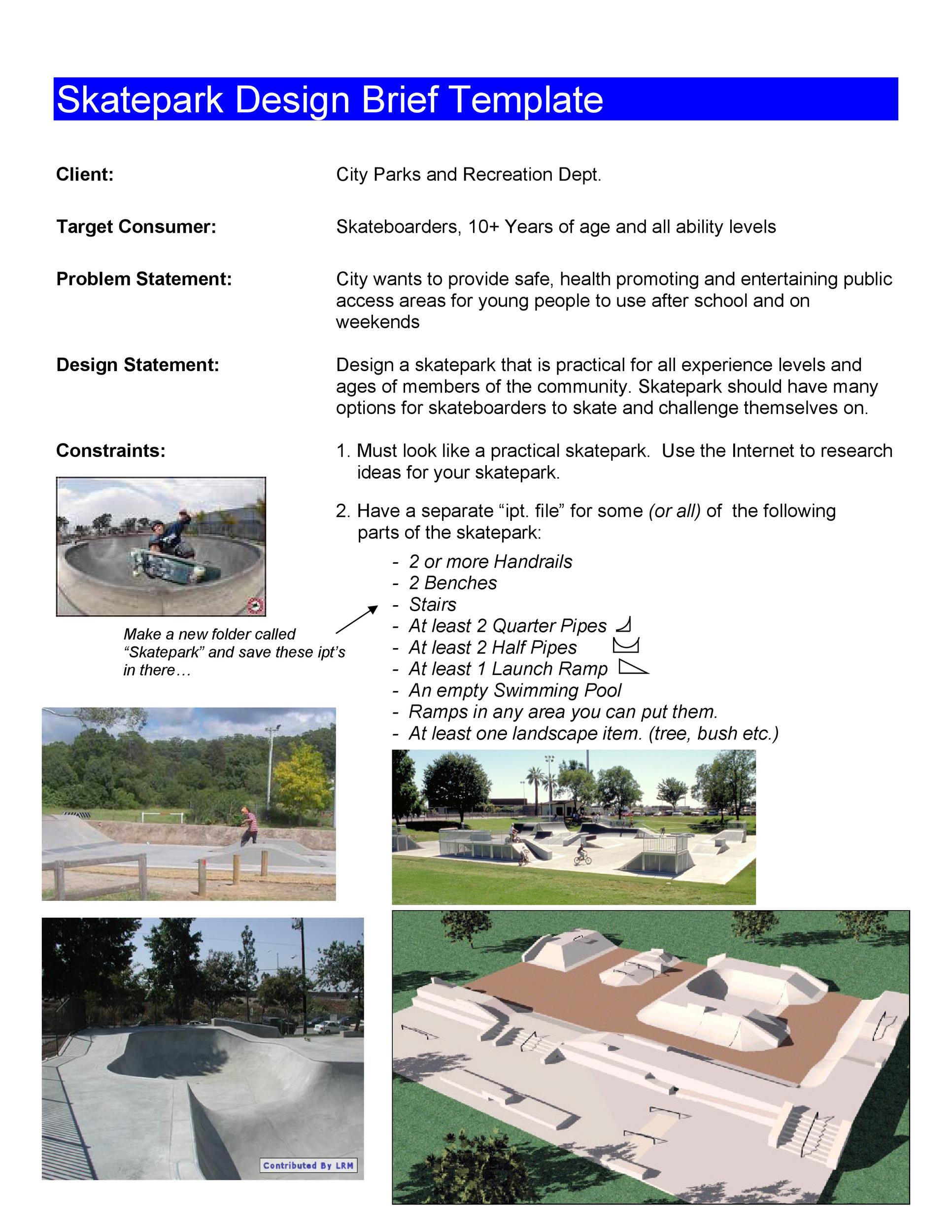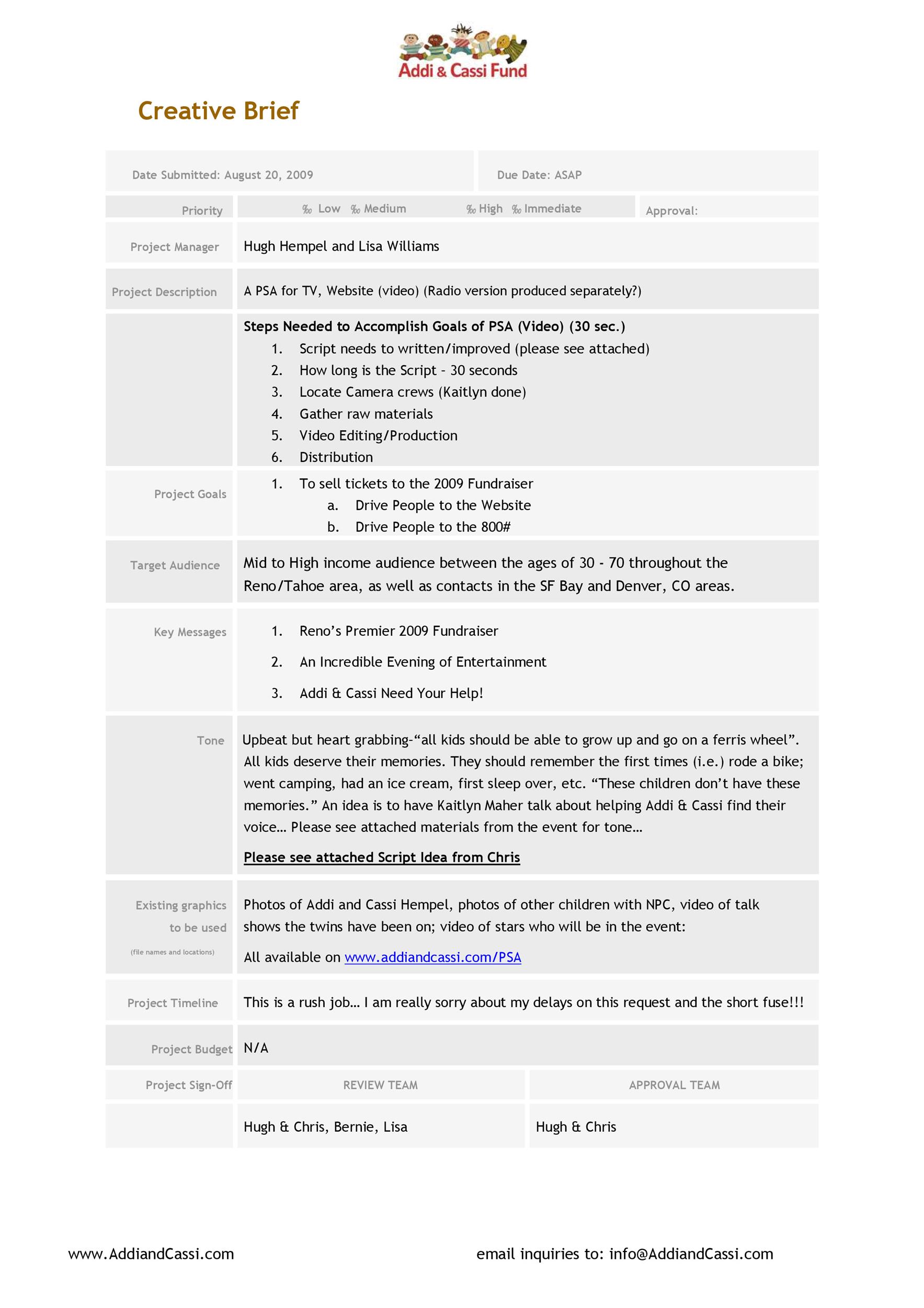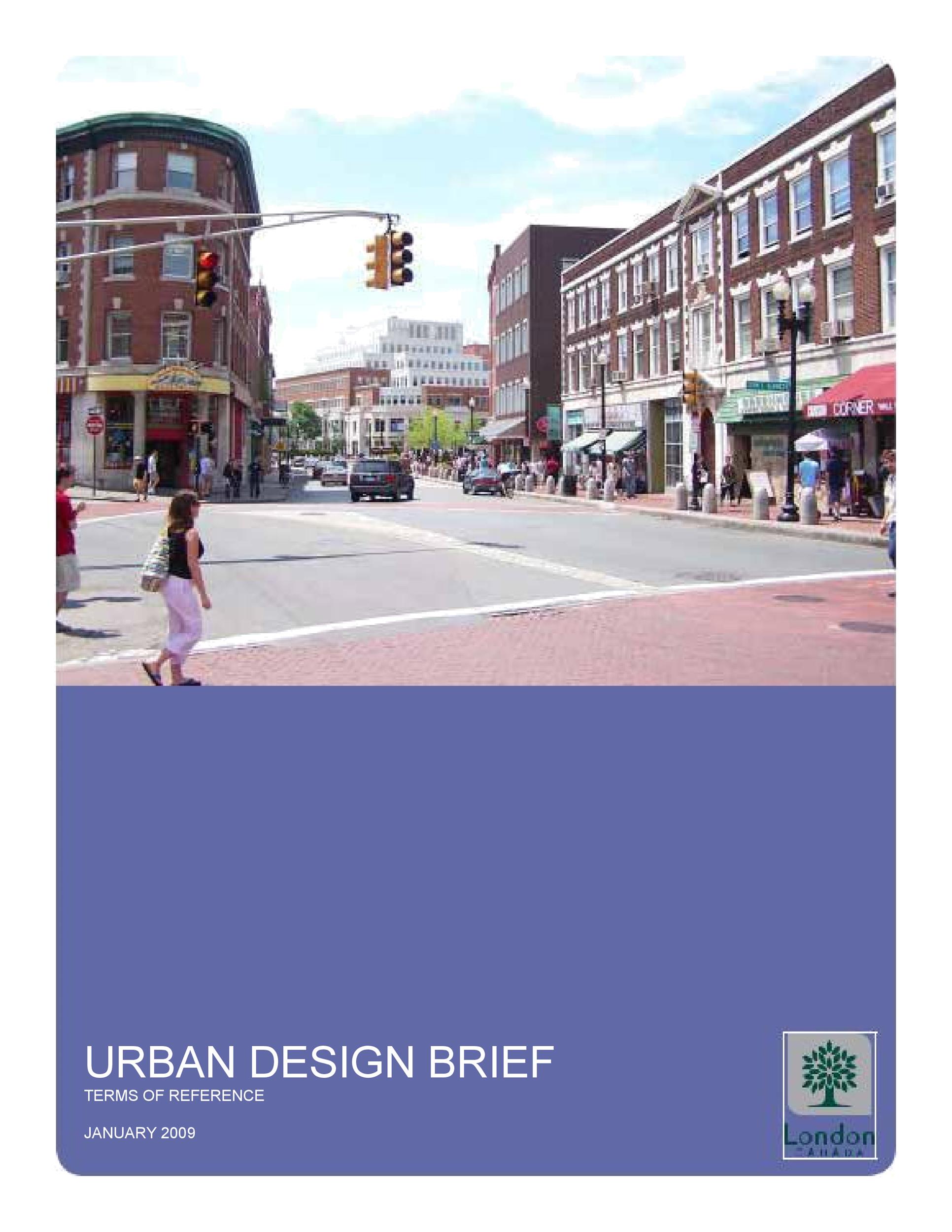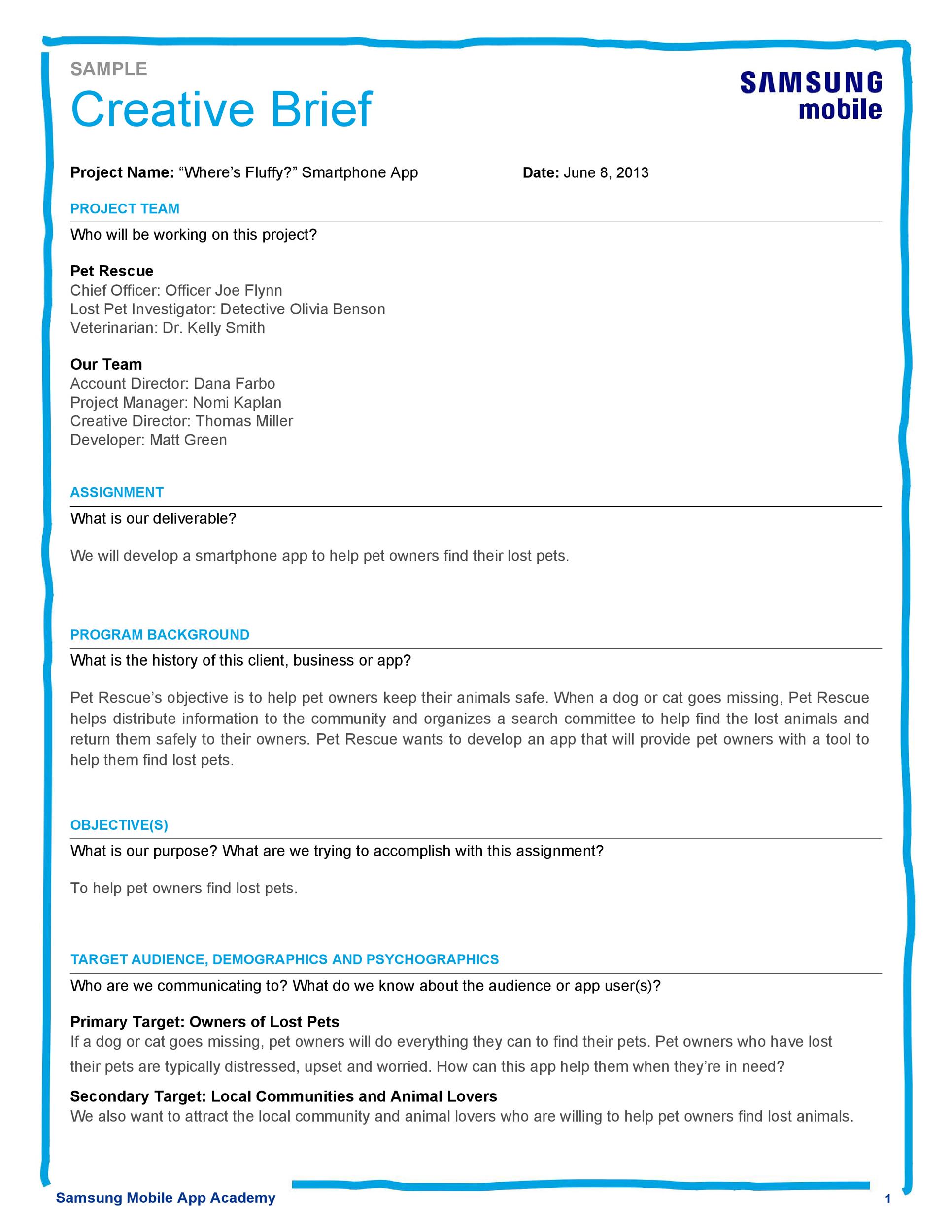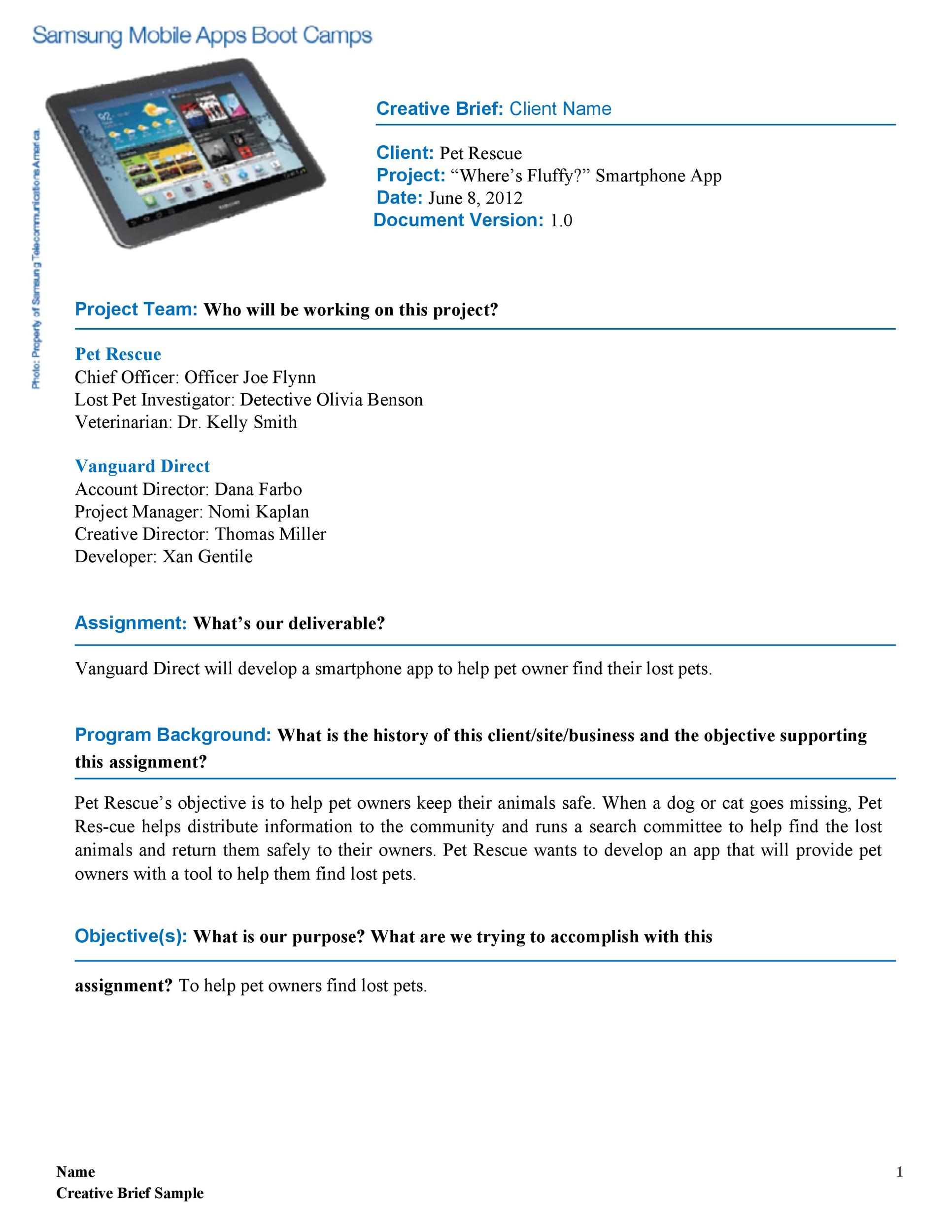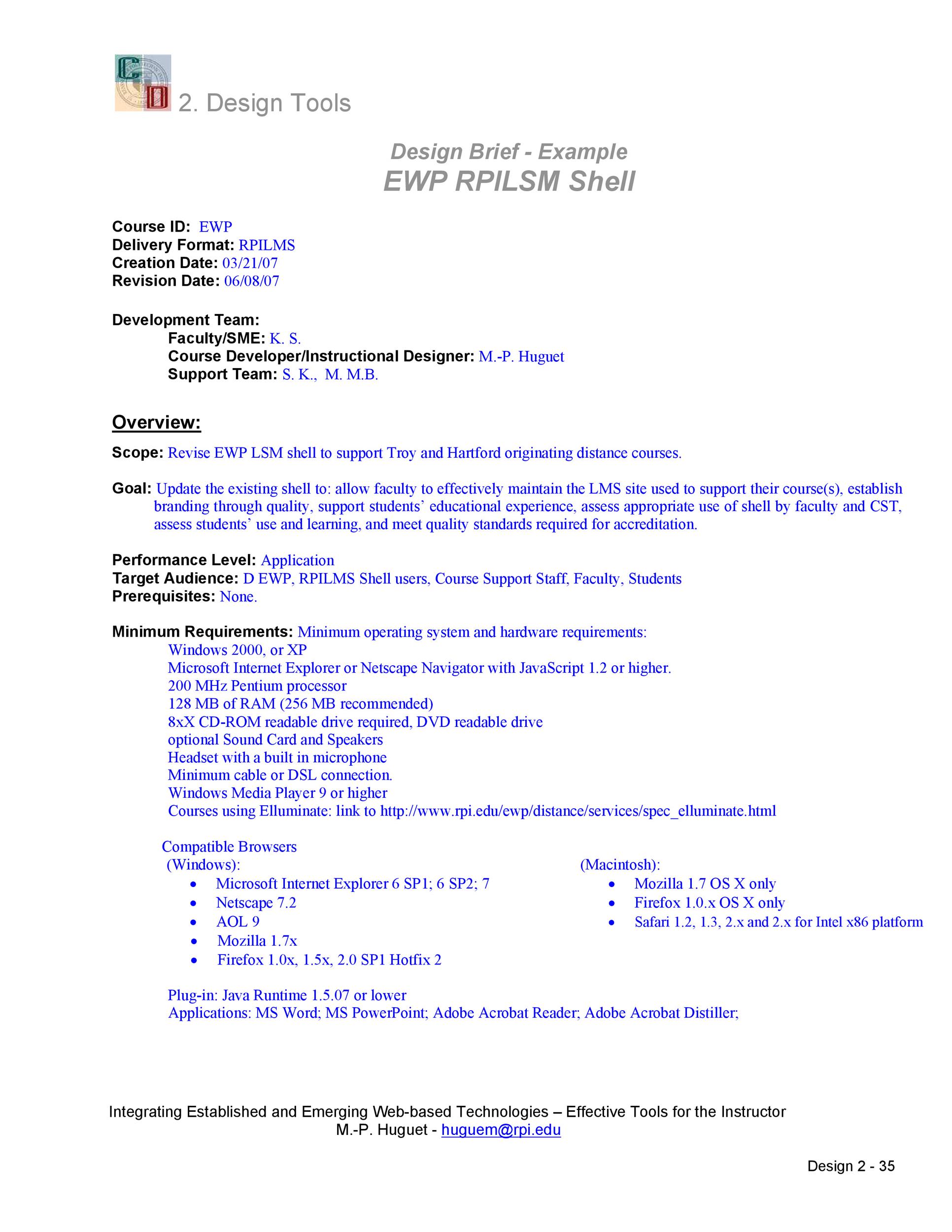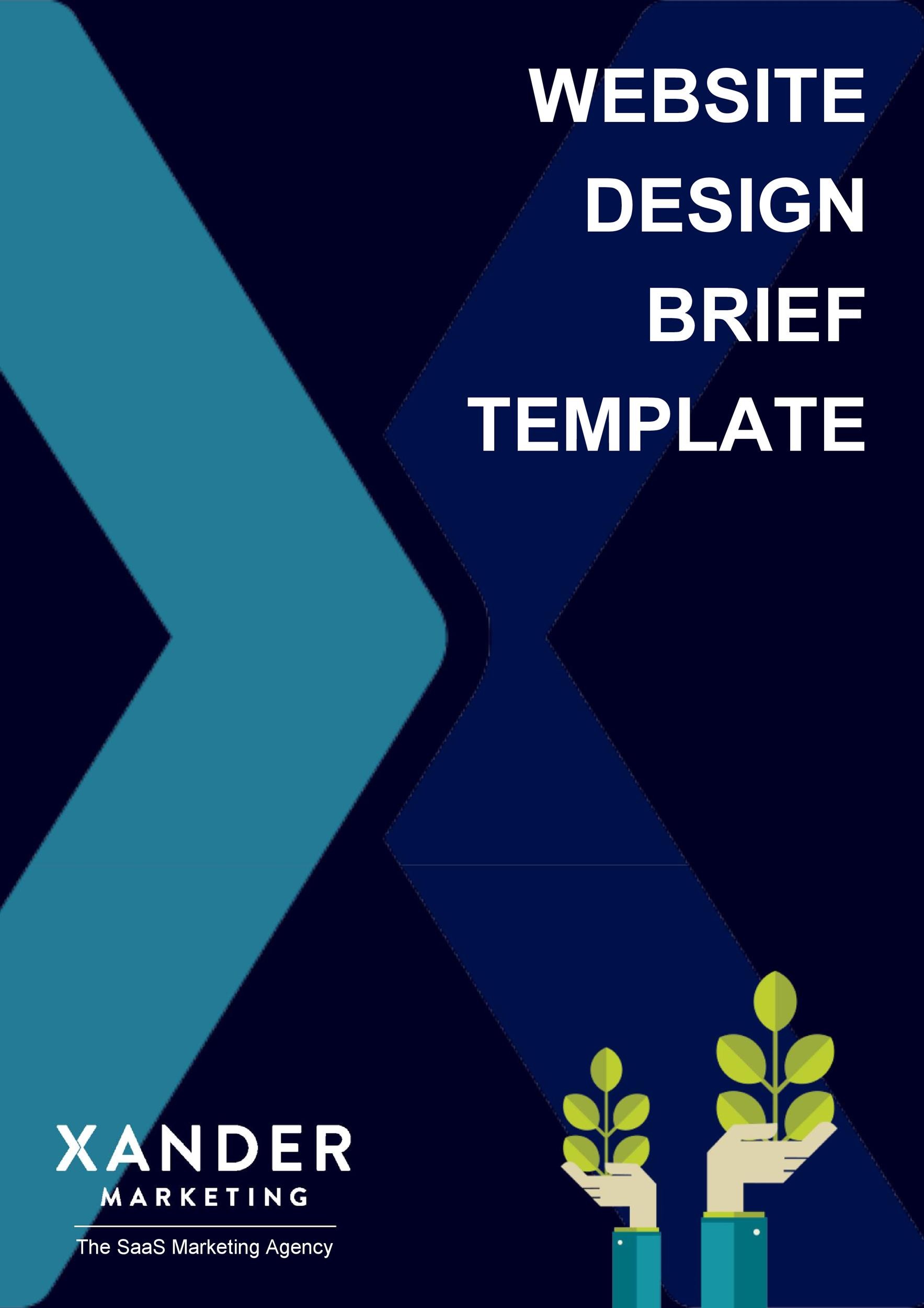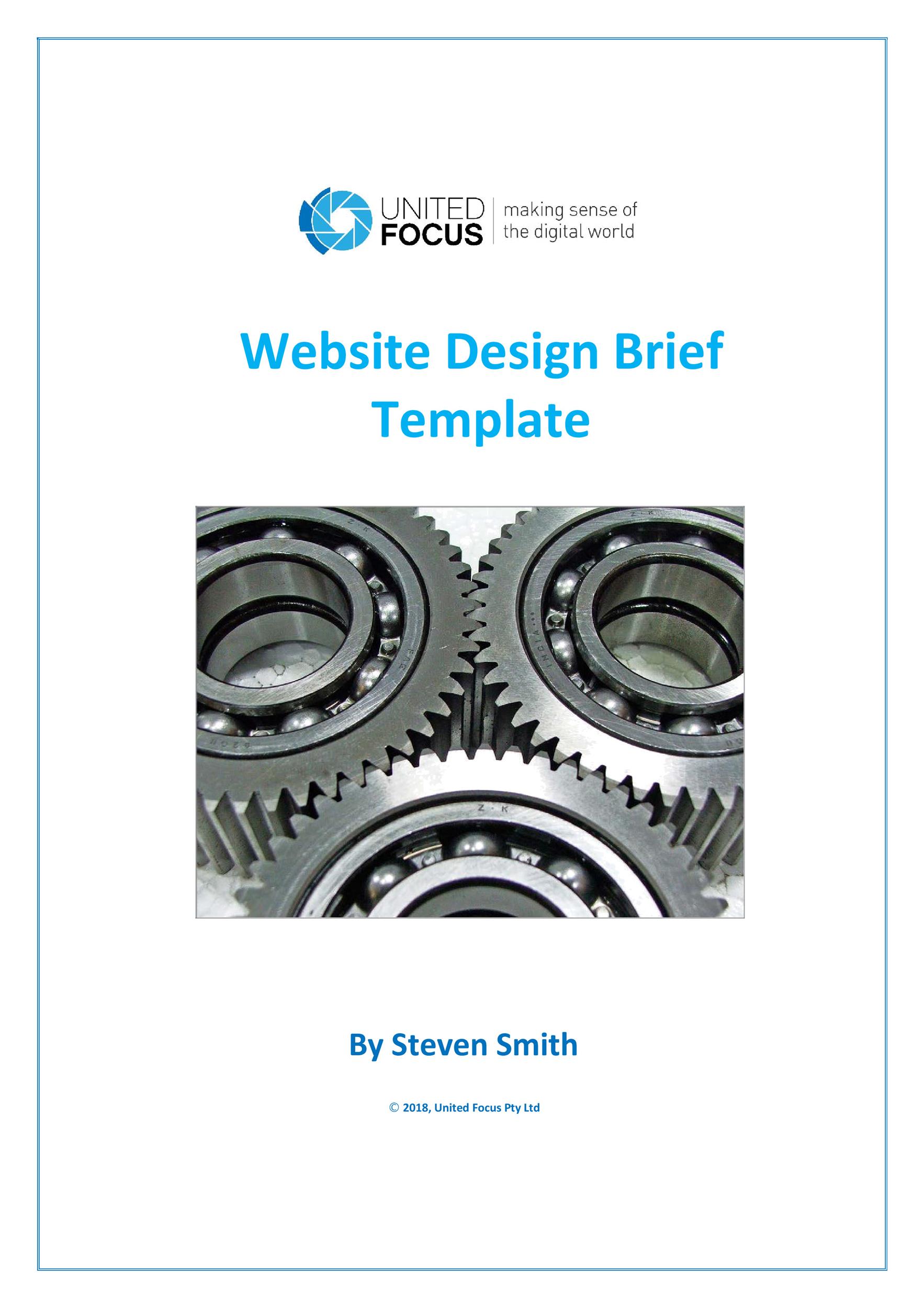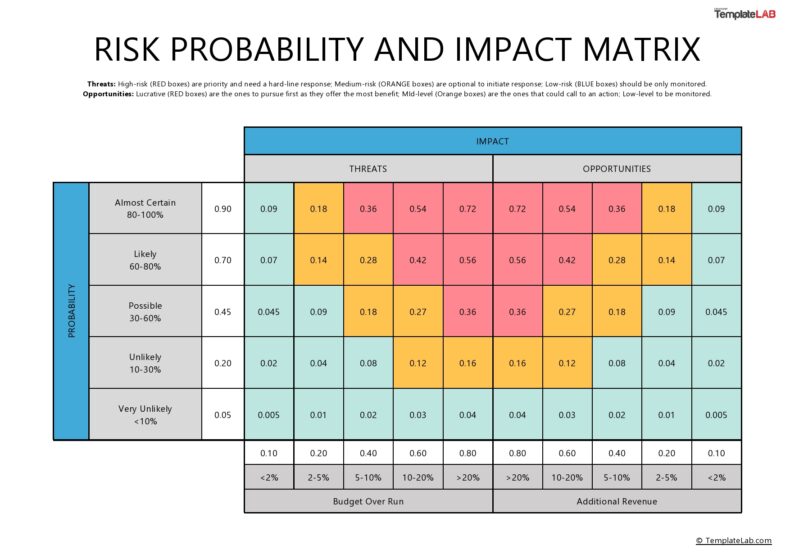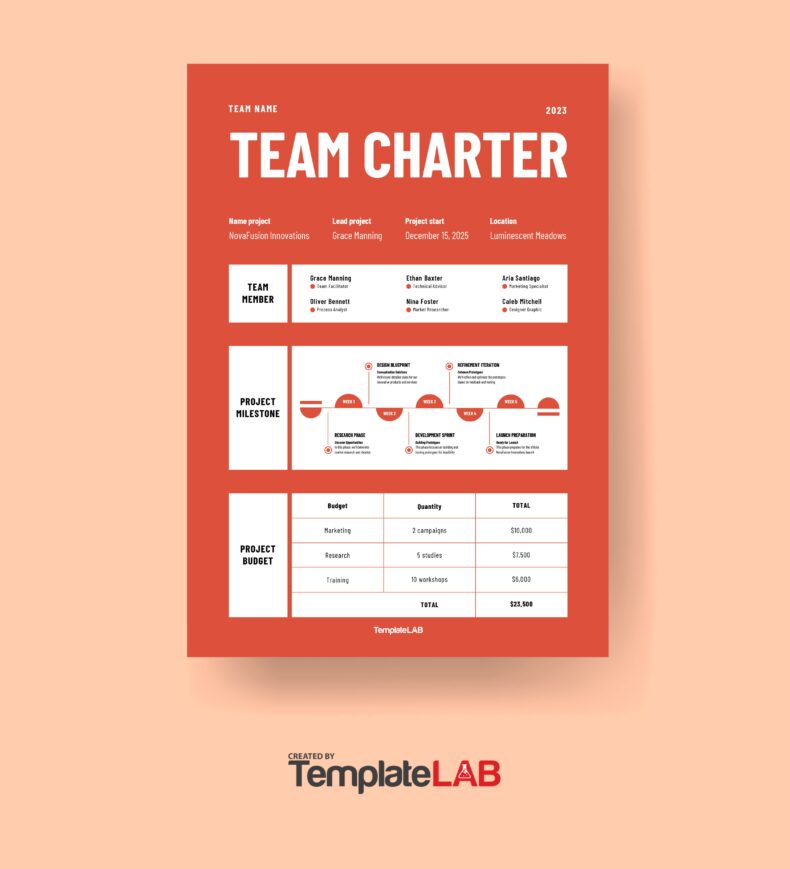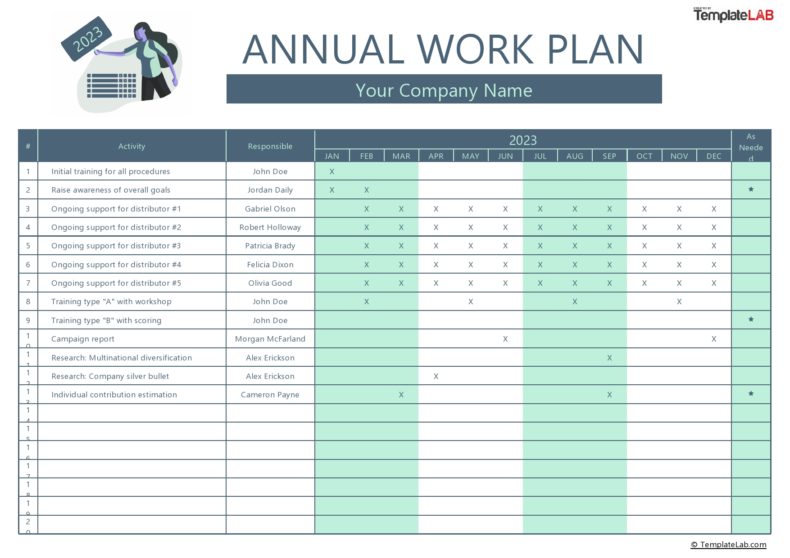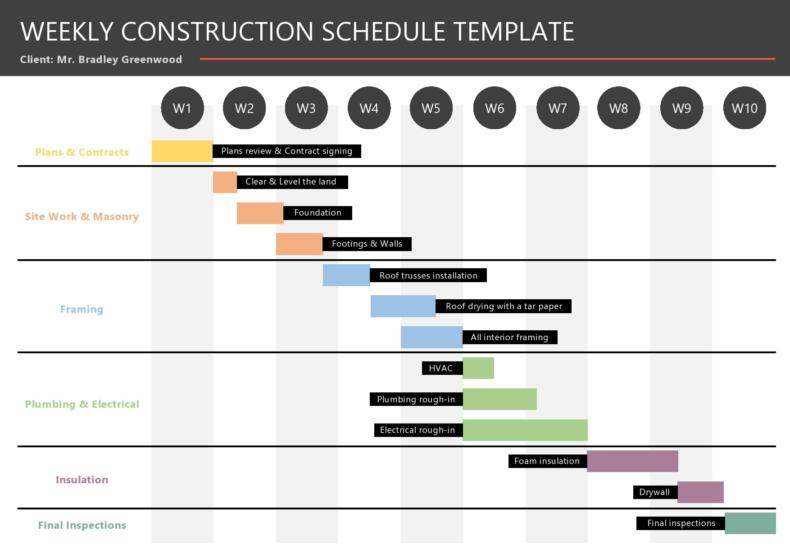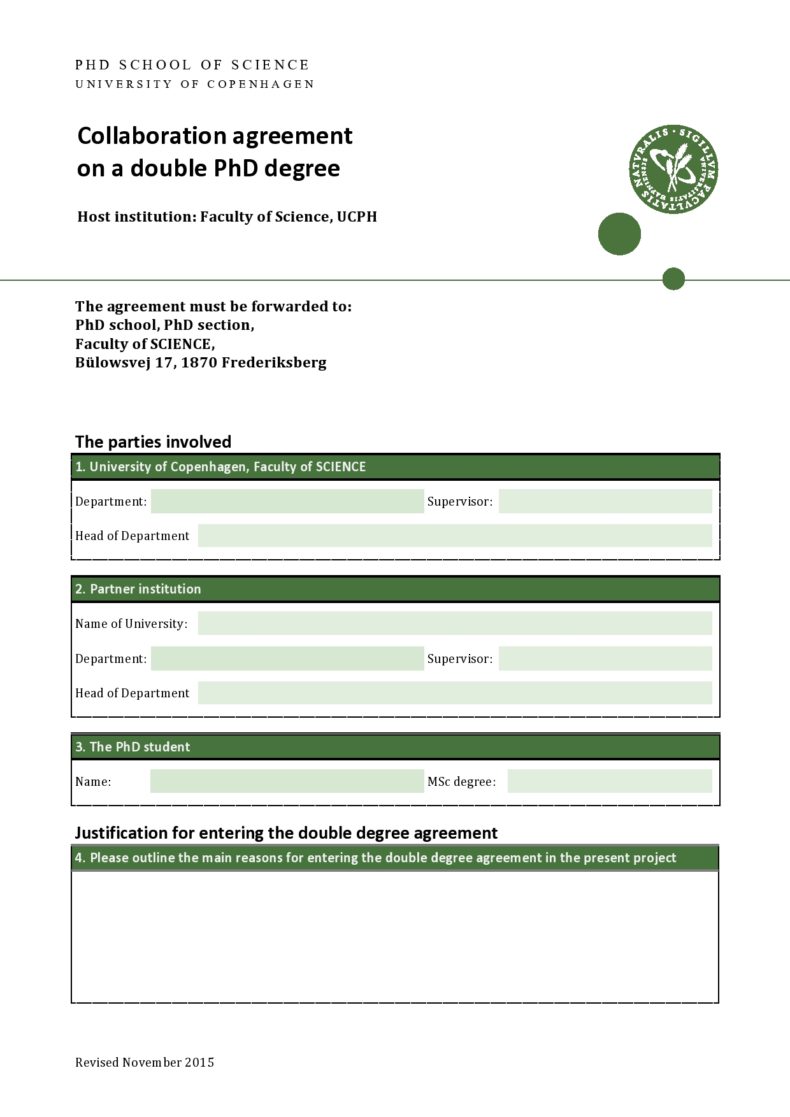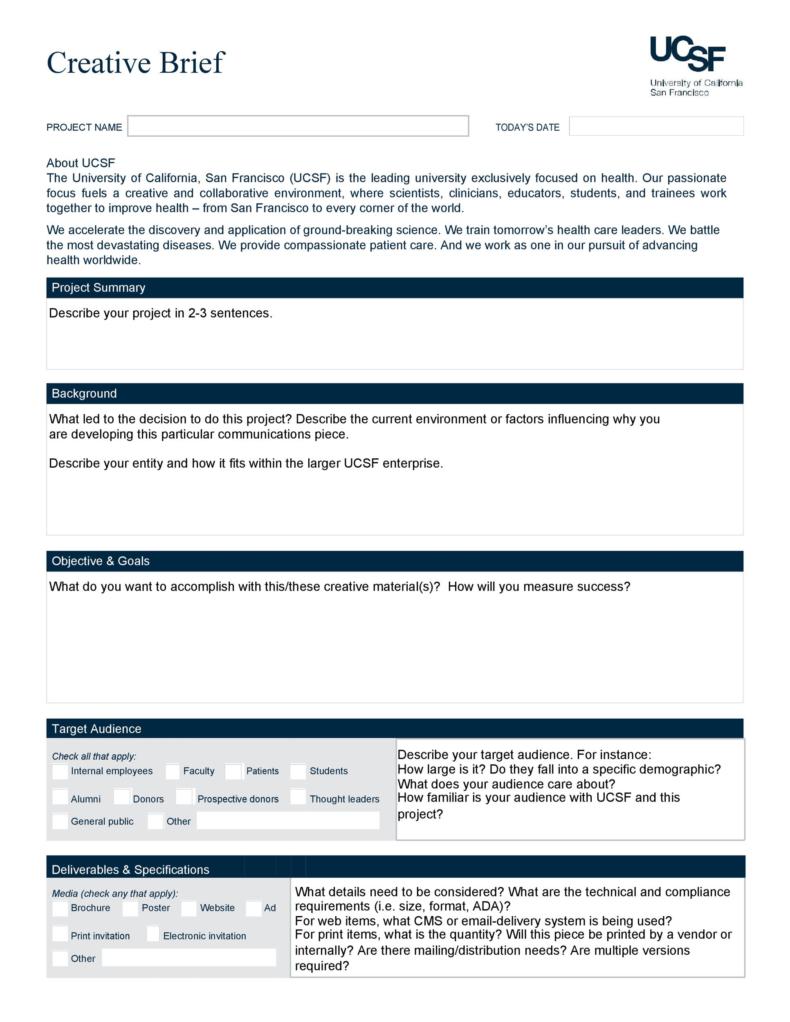Companies always partner with design agencies and individual designers for their custom design projects. This collaboration may go on for weeks or months, so regular, constant communication between the involved parties is crucial. But while phone calls, emails and video calls are favorable communication options, they always result in a constant back and forth that is time-consuming. Another type of communication is commonly used altogether: the design brief.
Table of Contents
Design Brief Templates
Understanding the basics of design briefs
Design briefs are used at the beginning of collaborative design projects to explain what is required of the project. The design brief essentially outlines the requirements of the project from the client’s point of view, such that the designer has guidelines to follow when they start work on the project. Those requirements include everything from preferred deadlines to the expected budget.
It’s essential that clients send along design briefs along with other project documents when initiating a conversation with the design agency. Some clients use everyday software to create their design briefs or buy a design brief example from the internet. Others don’t send a design brief to the designer at all. In that case, the design agency usually requests for it, or just sends over an in-house creative brief example (also known as a creative brief template) for the client to fill in.
Design Brief Examples
Why do you need a design brief?
A design brief is so essential addition to any design collaboration project that it is employed in nearly every design project today. The reasons for making one are numerous, including the ones below:
- It saves time
Rather than go back and forth with ‘clarification’ phone calls and emails, design briefs make everything clear from the very beginning. Any unclear points are cleared before the project starts too, which saves time for all involved parties. - It becomes a guide for the designer
The design brief is essentially a guidebook for the designer in the absence of the client’s guidance. The designer has to keep the brief in mind when choosing color, materials, themes and more. - It rules out miscommunication and disagreements
Design projects don’t always end with both parties happy about the final result. Some clients, especially those blame their dissatisfaction on miscommunication during the design process.
Designers are sometimes angered by the final payout offered by the client, especially if they didn’t discuss it beforehand. A design brief (or creative brief template) helps rule out these disagreements by making every participant’s position clear from the beginning.
Creative Brief Templates
The Questions To Ask In A Design Brief
If anything, a design brief is essentially a questionnaire. The ideal design brief is made up of questions that the client can easily answer to generate information about their business or company. These questions then become the guiding light for the designer, helping him/her come up with a final result that’s exactly what the client wants.
Creative Brief Examples
You can always draft your own design brief and fill it in yourself. Clients that don’t have the time to draft a custom one can always use a design brief example (also known as a creative brief template) from the internet instead. When writing your own design brief, the following are the questions you must include:
- What does your business do?
Without this question, the design brief remains of no use. Clients must offer the details of their brand, including their product lines, their history, their mission and vision. This helps the designer know where to start, and what’s appropriate to consider or not. - What is the desired goal of the project and how will it be measured?
Every client comes in with different goals, so it’s important to know what they want to achieve from this design project. Goals tend to align with the specific kind of project being worked on, such as web design, logo design, ad campaign design and more.
Most clients’ goals include:
increasing customer engagement (clicks, likes, comments)
boosting traffic (both foot and online traffic)
boosting a new product or service’s release
changing/ improving brand image
boosting competitive abilities
forging brand differentiation
increasing sales
simplifying the customer experience
improving sustainability
forging a new brand
and more.
Knowing these goals helps the designer identify the best ways to achieve the kind of product design the client is thinking of.
Besides understanding the goals of the client and his company, clients should also explain how they expect the new product design to help achieve the said goals. This is not only a moment of reflection for clients but a very valuable source of information for the designer’s future choices. - What is the target audience in mind?
Every design brief must feature a section on the target audience; even basic design brief examples from the internet always feature one. The target audience is the market, niche or group of people that the product will be marketed to.
The target audience for any product directly influences the specifics of a product’s design, because the design needs to speak to the people it is being marketed to. That’s why two products may feature different materials and colors in their packaging and branding despite being similar. In answering this question, the designer should offer specifics such as:
Whether it’s a B2B (Business to business such as cloud services) or B2C (business to customers such as an iPhone) product, or both.
The age, sex, income, location, education of the target population
The interests, values, beliefs of that target population
At least two sample buyer personas. - Who’s the competition to watch out for?
Some companies are so popular and famous that their direct competitors are already known by the general public. Many companies don’t have that luxury. In the end, designers may not always know automatically their new client’s major competition. That’s why a client’s major competitors are requested for in the design brief.
Outwitting and differentiating from the competition aren’t the only reasons for this question though; competitors can also be essential sources of inspiration, judging by what’s working for them design-wise and vice versa. - What’s the desired tone of the project?
It’s easy to assume what a client might need depending on the product or the brand story, but a client should make the confirmation first in the creative brief. Some clients may be looking to go darker with a new design or go softer. The design brief is the place to make that clear. - Any design references and materials you can recommend?
While some clients may prefer to leave everything to the designer, it’s not taboo for a client to recommend some references for the designer to use.
Design references help a designer paint the picture of the final product even better, and they can be everything from the color of the sky to famous painting to a competitor’s website. The client should list all of their references under this question. - What’s the budget?
There is no design project of there is no money, which is why budgets are always made clear first. Clients must make clear their budgets to help designers gauge how much they can offer. Clients should also make it clear whether they are offering a fixed amount or using another payment system like royalties or shares. - Are some parts of the project already outsourced to other companies?
Some clients hand out different aspects of the project to other creators, such as photography and copy text. Under this question, a client should make it clear if the designer is expected to provide all these services, or whether they’ve been handed out to other service providers. This also helps the designer plan ahead, depending on when the other service providers submit their work. - What are the expected deliverables?
What does the client expect the designer to offer in the final package? This can include photos, text, illustrations, logos, and more. The client should list all of these deliverables and their submission date. - How will the rights to the final product be handled?
While not a common feature on many a creative brief example, a section on rights to the final product is still highly essential, and you must fill it in. Who keeps the rights to the final design: designer or client? And if there is a transition of any kind, how does the client want it to be handled? - Who is the main contact of the project?
A design brief should feature all company contacts that are responsible in any way for the design project. Each contact should feature a name, title and contact information, including phone number and emails.
Among these contacts, the key contact should be clearly identified, i.e. the individual designers will communicate with on the project’s day to day progression. In addition, the contacts that have final approval on the project should be identified. - What’s the project’s start date?
The client has to reveal the date on which he expects the project to start. This also helps with tracking working manhours, especially if the project is to be paid by the hour. - What is the desired deadline (s)?
All design briefs and design brief templates feature a section on submission deadlines, mostly to avert the danger of late submissions and their consequences. Some clients prefer to have each deliverable submitted on a particular date, while others prefer to have everything delivered in one whole package.
Clients can come up with a specific date(s) depending on their needs on the project, or they can come up with a date after discussing with the designer how long it might take to complete the project.
NB: It’s important to remember that some design agencies ramp up their fees on projects with short deadlines because that triggers urgency.

